 Search by Keyword
|
“TWIST AND SHOUT”
(Phil Medley – Bert Russell Berns)
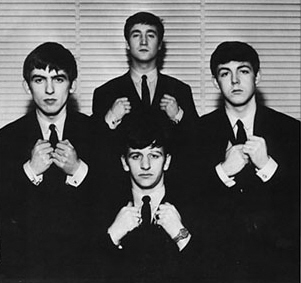 A total of 25 cover songs were recorded and released by The Beatles during their EMI career. Each of them (including “Maggie Mae”) had been featured within their repertoire and had been chosen because of their love for these songs. Even though it was their desire to record their own compositions, filling up two 14-song albums and four singles per year, as proposed by their record label and manager, with all originally written material proved too great a task. This presented them with the opportunity to officially record the "cream of the crop" cover songs that they loved and knew like the back of their hands. A total of 25 cover songs were recorded and released by The Beatles during their EMI career. Each of them (including “Maggie Mae”) had been featured within their repertoire and had been chosen because of their love for these songs. Even though it was their desire to record their own compositions, filling up two 14-song albums and four singles per year, as proposed by their record label and manager, with all originally written material proved too great a task. This presented them with the opportunity to officially record the "cream of the crop" cover songs that they loved and knew like the back of their hands.
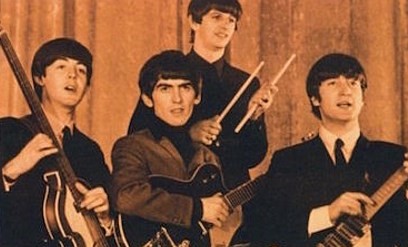 While all of these 25 cover songs have indeed become essential selections in their catalog, the majority of them were the group's adaptations of the original versions that they were familiar with, which did not eclipse the authenticity of these sources. Although The Beatles’ aim was to "take the world by storm," they respectfully recorded these songs with the intention of not straying too far from the original arrangements. In most cases, they adapted that original arrangement within their limited ‘guitar-bass-drums’ format and did so very admirably. While all of these 25 cover songs have indeed become essential selections in their catalog, the majority of them were the group's adaptations of the original versions that they were familiar with, which did not eclipse the authenticity of these sources. Although The Beatles’ aim was to "take the world by storm," they respectfully recorded these songs with the intention of not straying too far from the original arrangements. In most cases, they adapted that original arrangement within their limited ‘guitar-bass-drums’ format and did so very admirably.
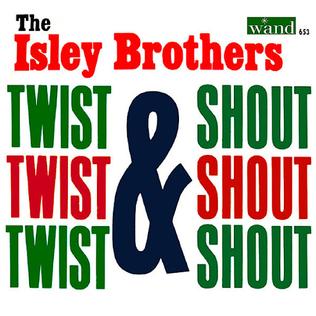
An undeniable exception to this rule was with The Beatles' interpretation of the song “Twist And Shout.” Although their adaptation was a direct reflection of the hit version by The Isley Brothers, the result became the definitive version of the song. Peaking at #2 for four weeks on the US Billboard Hot 100, it out-charted the Isley Brothers’ rendition (peaking at #17) by leaps and bounds. As of April of 1964, “Twist And Shout” became, and will always be known as, a Beatles song.
Songwriting History
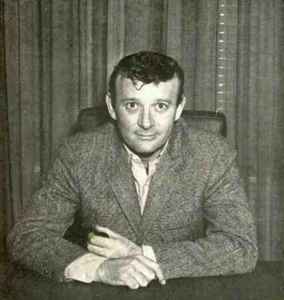 The history of “Twist And Shout” starts with examining the impressive career of songwriter and producer Bert Russell (aka Bert Berns). He can rightfully be called a pioneer in rock'n'roll as well as soul music in the '60s. The history of “Twist And Shout” starts with examining the impressive career of songwriter and producer Bert Russell (aka Bert Berns). He can rightfully be called a pioneer in rock'n'roll as well as soul music in the '60s.
Bert Russell was the son of Russian Jewish immigrants and was born on November 8th, 1929, in the Bronx, New York. His first introduction to music was studying classical piano when young. He contracted rheumatic fever as a child, but developed an intense love for music of all kinds, including soul, gospel, blues and Latin salsa music, which eventually led him to working in nightclubs in Cuba.
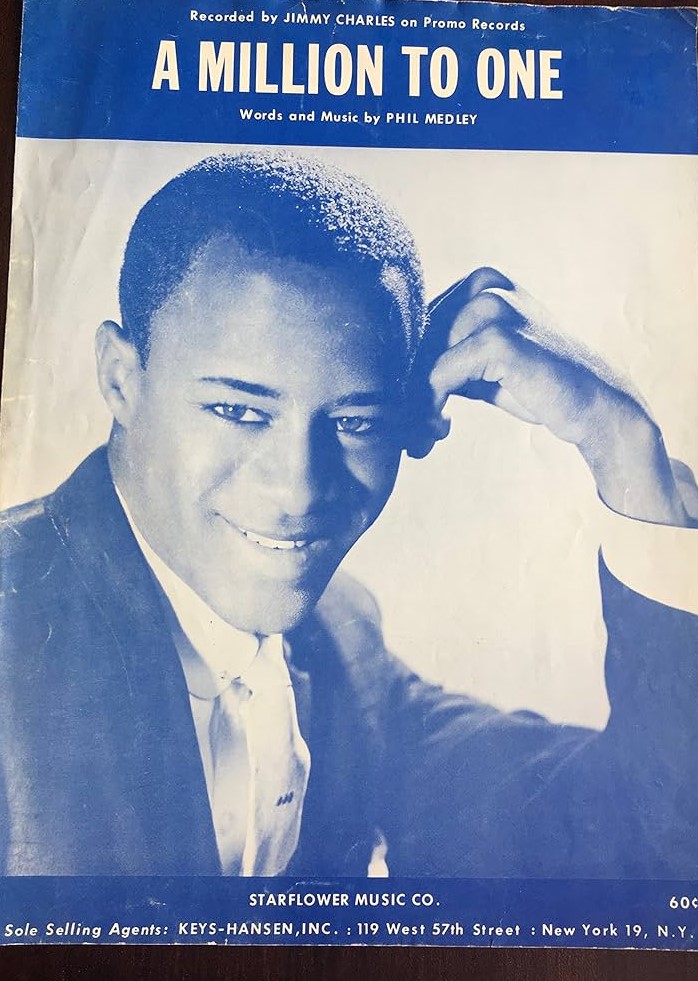 In 1960, he returned to New York and started working as a songwriter with the Brill Building group under the hire of Bobby Mellin. His first noteworthy composition was his collaboration with Phil Medley on the Latin-influenced song “Twist And Shout,” which was written to capitalize on the huge “twist” dance craze that began in the summer of 1960 with Chubby Checker's monster #1 hit "The Twist." Another Phil Medley claim to fame was his song “A Million To One” that was recorded by Jimmy Charles & the Revelletts along with the Phil Medley Orchestra, this single peaking at #5 on the US Billboard Hot 100 in 1960. Phil Medley also co-wrote the song "If I Didn't Have A Dime (To Play The Jukebox)" with Bert Russell, which peaked at #58 on Billboard in 1962 for Gene Pitney as the b-side of his #2 smash "Only Love Can Break A Heart." An additional co-write Phil Medley had with Bert Russell was "Killer Joe," a song that peaked at #16 on the Billboard Hot 100 in 1963 for a family group from The Philippines, The Rocky Fellers. In 1960, he returned to New York and started working as a songwriter with the Brill Building group under the hire of Bobby Mellin. His first noteworthy composition was his collaboration with Phil Medley on the Latin-influenced song “Twist And Shout,” which was written to capitalize on the huge “twist” dance craze that began in the summer of 1960 with Chubby Checker's monster #1 hit "The Twist." Another Phil Medley claim to fame was his song “A Million To One” that was recorded by Jimmy Charles & the Revelletts along with the Phil Medley Orchestra, this single peaking at #5 on the US Billboard Hot 100 in 1960. Phil Medley also co-wrote the song "If I Didn't Have A Dime (To Play The Jukebox)" with Bert Russell, which peaked at #58 on Billboard in 1962 for Gene Pitney as the b-side of his #2 smash "Only Love Can Break A Heart." An additional co-write Phil Medley had with Bert Russell was "Killer Joe," a song that peaked at #16 on the Billboard Hot 100 in 1963 for a family group from The Philippines, The Rocky Fellers.
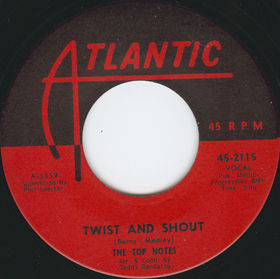 “Twist And Shout” was first recorded and released as a b-side by the Atlantic Records signed group The Top Notes in 1961, thus failing to chart. This recording featured the saxophone performance of King Curtis who had been featured on hit records by Aretha Franklin, The Coasters and his own group known as The Kingpins, who were on the bill with The Beatles at their famous Shea Stadium performance on August 15th, 1965. King Curtis was later recruited as a session musician on John Lennon's 1971 "Imagine" LP, appearing on the songs "It's So Hard" and "I Don't Want To Be A Soldier." The backing vocalists on this early recording of "Twist And Shout" were The Cookies, whose US #17 hit "Chains" was covered by The Beatles on their first British and American albums. This original recording of "Twist And Shout" was produced by the newly acquired Atlantic producer Phil Spector, who would go on to work on The Beatles' "Let It Be" album as well as on solo releases by both John Lennon and George Harrison. However, as for Phil Spector's production on this early version of "Twist And Shout," songwriter Bert Russell was very unhappy, saying that he "messed it up." “Twist And Shout” was first recorded and released as a b-side by the Atlantic Records signed group The Top Notes in 1961, thus failing to chart. This recording featured the saxophone performance of King Curtis who had been featured on hit records by Aretha Franklin, The Coasters and his own group known as The Kingpins, who were on the bill with The Beatles at their famous Shea Stadium performance on August 15th, 1965. King Curtis was later recruited as a session musician on John Lennon's 1971 "Imagine" LP, appearing on the songs "It's So Hard" and "I Don't Want To Be A Soldier." The backing vocalists on this early recording of "Twist And Shout" were The Cookies, whose US #17 hit "Chains" was covered by The Beatles on their first British and American albums. This original recording of "Twist And Shout" was produced by the newly acquired Atlantic producer Phil Spector, who would go on to work on The Beatles' "Let It Be" album as well as on solo releases by both John Lennon and George Harrison. However, as for Phil Spector's production on this early version of "Twist And Shout," songwriter Bert Russell was very unhappy, saying that he "messed it up."
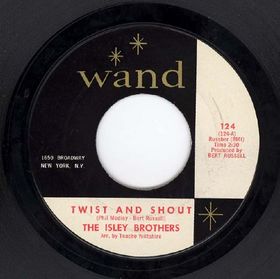 After his first success with writing the 1961 song “A Little Bit Of Soap” by The Jarmels, which peaked at #12 on the Billboard Hot 100, Bert Russell turned his attention back to “Twist and Shout.” The group The Isley Brothers were then a struggling R&B act signed to Wand Records who were dying to have their first Top 40 hit. Bert Russell gave the song to The Isley Brothers to record in 1962, but this time he decided to produce the recording himself and thereby altered the arrangement to include the ascending four-note "aah - aah - aah - aah" vocal transistion that has since become the song's trademark. This proved to be the initial success of "Twist And Shout," peaking at #17 on the Billboard Hot 100 and launching the successful career of The Isley Brothers. After his first success with writing the 1961 song “A Little Bit Of Soap” by The Jarmels, which peaked at #12 on the Billboard Hot 100, Bert Russell turned his attention back to “Twist and Shout.” The group The Isley Brothers were then a struggling R&B act signed to Wand Records who were dying to have their first Top 40 hit. Bert Russell gave the song to The Isley Brothers to record in 1962, but this time he decided to produce the recording himself and thereby altered the arrangement to include the ascending four-note "aah - aah - aah - aah" vocal transistion that has since become the song's trademark. This proved to be the initial success of "Twist And Shout," peaking at #17 on the Billboard Hot 100 and launching the successful career of The Isley Brothers.
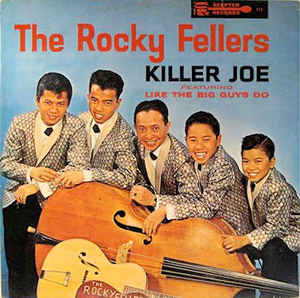 After this, Bert Russell’s career as composer and producer continued to flourish. His songwriting achievements included “Tell Him” as recorded by The Exciters, “Killer Joe” by The Rocky Fellers (co-written with Phil Medley as detailed above), “Hello Walls” by Little Esther Phillips, “I Want Candy” by The Strangeloves and eventually Bow Wow Wow, “Here Comes The Night” by Them, “Hang On Sloopy” by The McCoys and “Piece Of My Heart” by Emma Franklin, Big Brother and the Holding Company (featuring Janis Joplin) and eventually Faith Hill. His future indeed looked bright. After this, Bert Russell’s career as composer and producer continued to flourish. His songwriting achievements included “Tell Him” as recorded by The Exciters, “Killer Joe” by The Rocky Fellers (co-written with Phil Medley as detailed above), “Hello Walls” by Little Esther Phillips, “I Want Candy” by The Strangeloves and eventually Bow Wow Wow, “Here Comes The Night” by Them, “Hang On Sloopy” by The McCoys and “Piece Of My Heart” by Emma Franklin, Big Brother and the Holding Company (featuring Janis Joplin) and eventually Faith Hill. His future indeed looked bright.
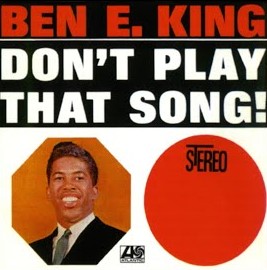 In 1963, Bert Russell took over the role as resident songwriter / producer of Atlantic Records from Jerry Leiber and Mike Stoller, and also involved himself in every aspect of record production, from finding the singers and working with them in the studio, all the way to overseeing the final product. In this capacity, he worked at launching and stabilizing the careers of such acts as The Drifters, Barbara Lewis, Solomon Burke and Ben E. King. In 1963, Bert Russell took over the role as resident songwriter / producer of Atlantic Records from Jerry Leiber and Mike Stoller, and also involved himself in every aspect of record production, from finding the singers and working with them in the studio, all the way to overseeing the final product. In this capacity, he worked at launching and stabilizing the careers of such acts as The Drifters, Barbara Lewis, Solomon Burke and Ben E. King.
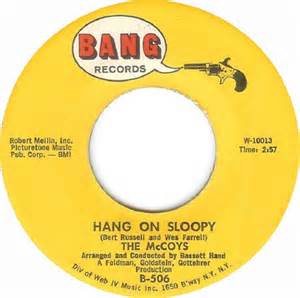 Bert Russell established two successful record labels in 1965, these being Bang Records and Shout Records. He also continued his work as a producer, working with The Strangeloves, Van Morrison, The McCoys, Freddie Scott, Emma Franklin and new artist named Neil Diamond. Tragically, Bert Berns (as he was later known) died of heart failure on December 30th, 1967 at only 38 years of age. This ended a remarkable run of success that truly transformed the face of pop music in the '60s and influenced the music industry for decades to come. Co-composer of "Twist And Shout," Phil Medley, died at 81 years of age on October 3rd, 1997. Bert Russell established two successful record labels in 1965, these being Bang Records and Shout Records. He also continued his work as a producer, working with The Strangeloves, Van Morrison, The McCoys, Freddie Scott, Emma Franklin and new artist named Neil Diamond. Tragically, Bert Berns (as he was later known) died of heart failure on December 30th, 1967 at only 38 years of age. This ended a remarkable run of success that truly transformed the face of pop music in the '60s and influenced the music industry for decades to come. Co-composer of "Twist And Shout," Phil Medley, died at 81 years of age on October 3rd, 1997.
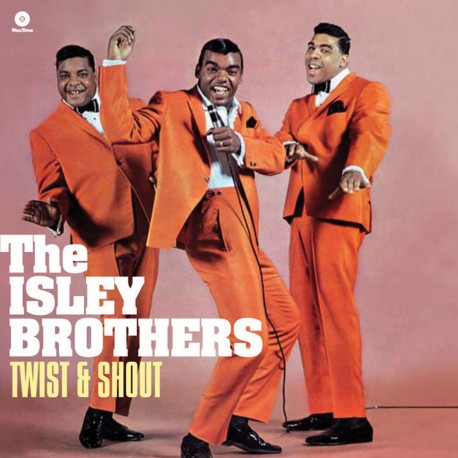 The Isley Brothers, whose version of “Twist And Shout” The Beatles based their rendition on, have a long standing career that spans six decades. This makes them the longest-running charted group in musical history. Spanning multiple generations of members starting with the original three brother line-up of Ronald, Rudolph and O’Kelly Jr, this Cincinnati, Ohio based group found great success in multiple genres: gospel, soul, R&B, doo-wop, funk, rock, adult contemporary and hip-hop. They also paved the way for artists to open their own record labels, the group using the proceeds from the success of “Twist And Shout” to develop T-Neck Records in 1965, predating The Beatles' Apple Records by three years. The Isley Brothers, whose version of “Twist And Shout” The Beatles based their rendition on, have a long standing career that spans six decades. This makes them the longest-running charted group in musical history. Spanning multiple generations of members starting with the original three brother line-up of Ronald, Rudolph and O’Kelly Jr, this Cincinnati, Ohio based group found great success in multiple genres: gospel, soul, R&B, doo-wop, funk, rock, adult contemporary and hip-hop. They also paved the way for artists to open their own record labels, the group using the proceeds from the success of “Twist And Shout” to develop T-Neck Records in 1965, predating The Beatles' Apple Records by three years.
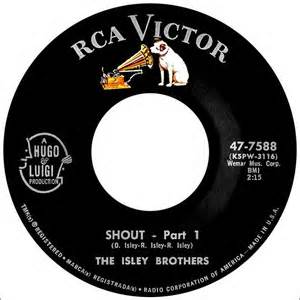 Their first success was with what became an R&B classic, the self-penned "Shout," this also being performed by The Beatles during their early Hamburg / Cavern years and on their British television special “Around The Beatles.” (This rendition is featured on The Beatles album “Anthology 1.”) As the Isley Brothers were opening for Jackie Wilson on a tour, Ronald Isley spontaneously went into a gospel routine with his other brothers as Jackie Wilson was performing. Ronald Isley yelled out, “you know you make me want to shout,” which was heard by an RCA Records scout in the audience. They were then signed to RCA and recorded their self-penned “Shout,” which peaked at #47 on the Billboard pop chart. The song eventually reached the Top Ten in the US (by Joey Dee and The Starlighters), and in the UK (by Lulu). Their first success was with what became an R&B classic, the self-penned "Shout," this also being performed by The Beatles during their early Hamburg / Cavern years and on their British television special “Around The Beatles.” (This rendition is featured on The Beatles album “Anthology 1.”) As the Isley Brothers were opening for Jackie Wilson on a tour, Ronald Isley spontaneously went into a gospel routine with his other brothers as Jackie Wilson was performing. Ronald Isley yelled out, “you know you make me want to shout,” which was heard by an RCA Records scout in the audience. They were then signed to RCA and recorded their self-penned “Shout,” which peaked at #47 on the Billboard pop chart. The song eventually reached the Top Ten in the US (by Joey Dee and The Starlighters), and in the UK (by Lulu).
 The group remained on RCA for a couple years but were not able to match the success of their hit “Shout,” so they then signed with the Scepter / Wand label in 1962. Bert Russell (Berns) then gave his co-written composition “Twist And Shout” to the Isleys as their first release on the label. The Isleys thought the song was too pop oriented for them, but they relented and followed the lead of Bert Russell as his production of the song led to the group's first Top 40 hit, reaching #17 on the Billboard Hot 100 in the summer of 1962. The group remained on RCA for a couple years but were not able to match the success of their hit “Shout,” so they then signed with the Scepter / Wand label in 1962. Bert Russell (Berns) then gave his co-written composition “Twist And Shout” to the Isleys as their first release on the label. The Isleys thought the song was too pop oriented for them, but they relented and followed the lead of Bert Russell as his production of the song led to the group's first Top 40 hit, reaching #17 on the Billboard Hot 100 in the summer of 1962.
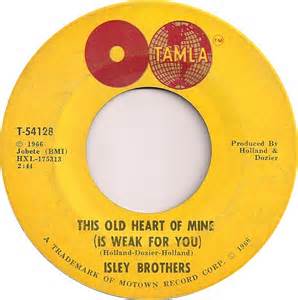 Unfortunately, their career floundered after this, as all of their following releases on Scepter / Wand Records failed to make a dent on the pop chart. Even their self-penned original version of “Nobody But Me,” which eventually became a #8 hit by the Human Beinz in 1968, failed to have any impact for them. Their next move was to use the money they earned from “Twist And Shout” to form their own independent label T-Neck Records. In 1965, Isley Brothers singles began being released that featured an unknown guitarist Jimmy James, whose actual name was Jimi Hendrix. They also tried a stint with Motown Records, which did return them briefly to the Top 40 with their Tamla hit “This Old Heart Of Mine (Is Weak For You)” peaking at #12 on the US Billboard Hot 100. But Motown’s attention was primarily focused on their previously established acts, such as The Temptations and The Supremes, so the Isley Brothers re-established T-Neck Records in 1968 but as a subsidiary of Buddah Records. Unfortunately, their career floundered after this, as all of their following releases on Scepter / Wand Records failed to make a dent on the pop chart. Even their self-penned original version of “Nobody But Me,” which eventually became a #8 hit by the Human Beinz in 1968, failed to have any impact for them. Their next move was to use the money they earned from “Twist And Shout” to form their own independent label T-Neck Records. In 1965, Isley Brothers singles began being released that featured an unknown guitarist Jimmy James, whose actual name was Jimi Hendrix. They also tried a stint with Motown Records, which did return them briefly to the Top 40 with their Tamla hit “This Old Heart Of Mine (Is Weak For You)” peaking at #12 on the US Billboard Hot 100. But Motown’s attention was primarily focused on their previously established acts, such as The Temptations and The Supremes, so the Isley Brothers re-established T-Neck Records in 1968 but as a subsidiary of Buddah Records.
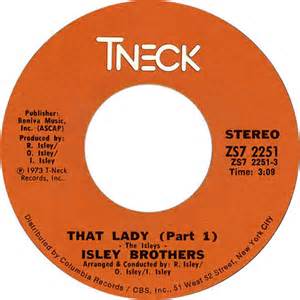 By 1969, after recruiting younger brothers Ernie and Marvin as musical members of the group, The Isley Brothers had their biggest hit to date, the funk anthem “It’s Your Thing,” which had reached #2 on the Billboard Hot 100 as well as #1 on the Black Singles chart. Their successes continued throughout the '60s, '70s and '80s, scoring eight more Top 40 singles, each of these being on their own T-Neck record label. Hits include “That Lady (Part 1),” peaking at #6, “Fight The Power – Part 1,” peaking at #4, and the Stephen Stills classic hit “Love The One You’re With” that made it up to #18. They also acquired a total of seven #1 hits on the R&B charts, including a duet with R. Kelly called “Down Low (Nobody Has To Know)” in 1996. Their 2001 hit “Contagious,” which hit #19 on the Billboard Hot 100, makes a total of five decades of Top 40 US hits for the Isley Brothers career to date. By 1969, after recruiting younger brothers Ernie and Marvin as musical members of the group, The Isley Brothers had their biggest hit to date, the funk anthem “It’s Your Thing,” which had reached #2 on the Billboard Hot 100 as well as #1 on the Black Singles chart. Their successes continued throughout the '60s, '70s and '80s, scoring eight more Top 40 singles, each of these being on their own T-Neck record label. Hits include “That Lady (Part 1),” peaking at #6, “Fight The Power – Part 1,” peaking at #4, and the Stephen Stills classic hit “Love The One You’re With” that made it up to #18. They also acquired a total of seven #1 hits on the R&B charts, including a duet with R. Kelly called “Down Low (Nobody Has To Know)” in 1996. Their 2001 hit “Contagious,” which hit #19 on the Billboard Hot 100, makes a total of five decades of Top 40 US hits for the Isley Brothers career to date.
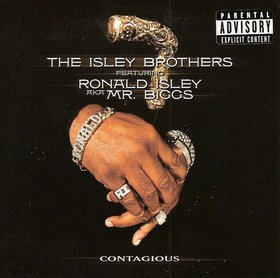 The music of the Isley Brothers has been covered by many artists, such as Rod Stewart, Michael Bolton, The Who, The Supremes, Vanessa L. Williams, and sampled by Gwen Stefani, Ice Cube, The Notorious B.I.G, The Beastie Boys and many others. The Isley Brothers were inducted into the Rock And Roll Hall Of Fame in 1992, as well as the Vocal Group Hall Of Fame in 2003. Ronald Isley has been a member of the group through their entire charted career, from “Shout” in 1959, to “Contagious” in 2001. The impact of the Isley Brothers has been and will be felt in the music industry for many decades to come. The music of the Isley Brothers has been covered by many artists, such as Rod Stewart, Michael Bolton, The Who, The Supremes, Vanessa L. Williams, and sampled by Gwen Stefani, Ice Cube, The Notorious B.I.G, The Beastie Boys and many others. The Isley Brothers were inducted into the Rock And Roll Hall Of Fame in 1992, as well as the Vocal Group Hall Of Fame in 2003. Ronald Isley has been a member of the group through their entire charted career, from “Shout” in 1959, to “Contagious” in 2001. The impact of the Isley Brothers has been and will be felt in the music industry for many decades to come.
Recording History
.jpg) The first time the group recorded "Twist And Shout" was on November 27th, 1962 for BBC radio, The Beatles' first official performance of the song (although some claim it was played in their stage act prior to this date). The song was recorded before a live studio audience at BBC Paris Studio in London on this date between 7 and 8 pm for the British radio program “The Talent Spot,” which was broadcast on December 4th, 1962 between 5 and 5:29 pm. The first time the group recorded "Twist And Shout" was on November 27th, 1962 for BBC radio, The Beatles' first official performance of the song (although some claim it was played in their stage act prior to this date). The song was recorded before a live studio audience at BBC Paris Studio in London on this date between 7 and 8 pm for the British radio program “The Talent Spot,” which was broadcast on December 4th, 1962 between 5 and 5:29 pm.
 George Martin has been quoted as saying that he told The Beatles on February 11th, 1963 to “play me this selection of things I’ve chosen from what you do at the Cavern.” In the 2000 "Anthology" book, George Martin credits himself as suggesting the recording of "Twist And Shout" to be recorded last. "I knew that 'Twist And Shout' was a real larynx-tearing and I said, 'We're not going to record that until the end of the day, because if we record it early on, you're not going to have a voice left.' So that was the last thing we did that night...it needed that linen-ripping sound." However, with all the quotes analyzed, it looks as though the choice to record this song was indeed a last minute decision between all involved in the studio on that day. George Martin has been quoted as saying that he told The Beatles on February 11th, 1963 to “play me this selection of things I’ve chosen from what you do at the Cavern.” In the 2000 "Anthology" book, George Martin credits himself as suggesting the recording of "Twist And Shout" to be recorded last. "I knew that 'Twist And Shout' was a real larynx-tearing and I said, 'We're not going to record that until the end of the day, because if we record it early on, you're not going to have a voice left.' So that was the last thing we did that night...it needed that linen-ripping sound." However, with all the quotes analyzed, it looks as though the choice to record this song was indeed a last minute decision between all involved in the studio on that day.
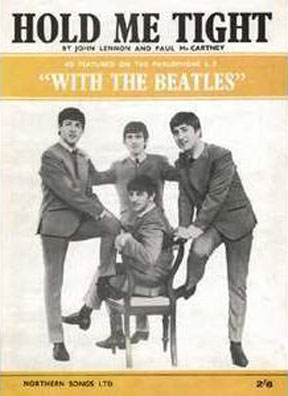 The actual circumstances appear to be that, after their beginning at 10 am that morning in EMI Studio Two, it was now 10 pm. The band and the recording staff filed into the EMI canteen to have a small coffee and biscuit break knowing that one more song was required. What would it be? No other original composition was deemed suitable at that time, the attempt at recording "Hold Me Tight" having been deemed unacceptable and unworthy for completing at that late hour of the day. Several songs were suggested and vetoed. No one can remember who suggested “Twist And Shout” at this point (possibly George Martin), but despite John’s voice being badly taxed because of his bad cold, he reluctantly agreed to sing it. So the decision to do the song appears to be a true last minute decision. The actual circumstances appear to be that, after their beginning at 10 am that morning in EMI Studio Two, it was now 10 pm. The band and the recording staff filed into the EMI canteen to have a small coffee and biscuit break knowing that one more song was required. What would it be? No other original composition was deemed suitable at that time, the attempt at recording "Hold Me Tight" having been deemed unacceptable and unworthy for completing at that late hour of the day. Several songs were suggested and vetoed. No one can remember who suggested “Twist And Shout” at this point (possibly George Martin), but despite John’s voice being badly taxed because of his bad cold, he reluctantly agreed to sing it. So the decision to do the song appears to be a true last minute decision.
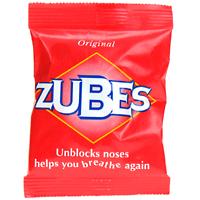 Engineer Norman Smith explained in Mark Lewisohn's 1988 book "The Complete Beatles Recording Sessions," "By this time all their throats were tired and sore - it was 12 hours since we started working. Lennon's, in particular, was almost completely gone so we all really had to get it right first time, The Beatles on the studio floor and us in the control room. Lennon sucked on a couple more Zubes (throat sweets), had a bit of gargle with milk and away we went." Engineer Cris Neal, as also quoted in the book "The Complete Beatles Recording Sessions," remembered: "John was stripped to the waste to do this most amazingly raucous vocal." As quoted in the book "Anthology, John recalled in 1976: "The last song nearly killed me. My voice was not the same for a long time after; every time I swallowed it was like sandpaper...You can hear that I'm just a frantic guy doing his best." Engineer Norman Smith explained in Mark Lewisohn's 1988 book "The Complete Beatles Recording Sessions," "By this time all their throats were tired and sore - it was 12 hours since we started working. Lennon's, in particular, was almost completely gone so we all really had to get it right first time, The Beatles on the studio floor and us in the control room. Lennon sucked on a couple more Zubes (throat sweets), had a bit of gargle with milk and away we went." Engineer Cris Neal, as also quoted in the book "The Complete Beatles Recording Sessions," remembered: "John was stripped to the waste to do this most amazingly raucous vocal." As quoted in the book "Anthology, John recalled in 1976: "The last song nearly killed me. My voice was not the same for a long time after; every time I swallowed it was like sandpaper...You can hear that I'm just a frantic guy doing his best."
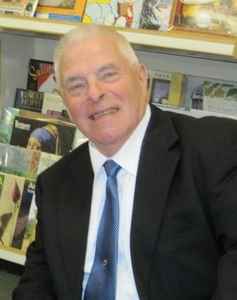 With "take one," they performed live exactly what you hear on the record to this day, no overdubs necessary. Their legendary performance on that evening at around 10:15 pm had an effect on everyone who happened to be in attendance. Richard Langham, an EMI engineer present that day, called this performance “an amazing demonstration.” George Martin himself exclaimed that day in astonishment: "I don't know how they do it. We had been recording all day but the longer we go on the better they get." With "take one," they performed live exactly what you hear on the record to this day, no overdubs necessary. Their legendary performance on that evening at around 10:15 pm had an effect on everyone who happened to be in attendance. Richard Langham, an EMI engineer present that day, called this performance “an amazing demonstration.” George Martin himself exclaimed that day in astonishment: "I don't know how they do it. We had been recording all day but the longer we go on the better they get."
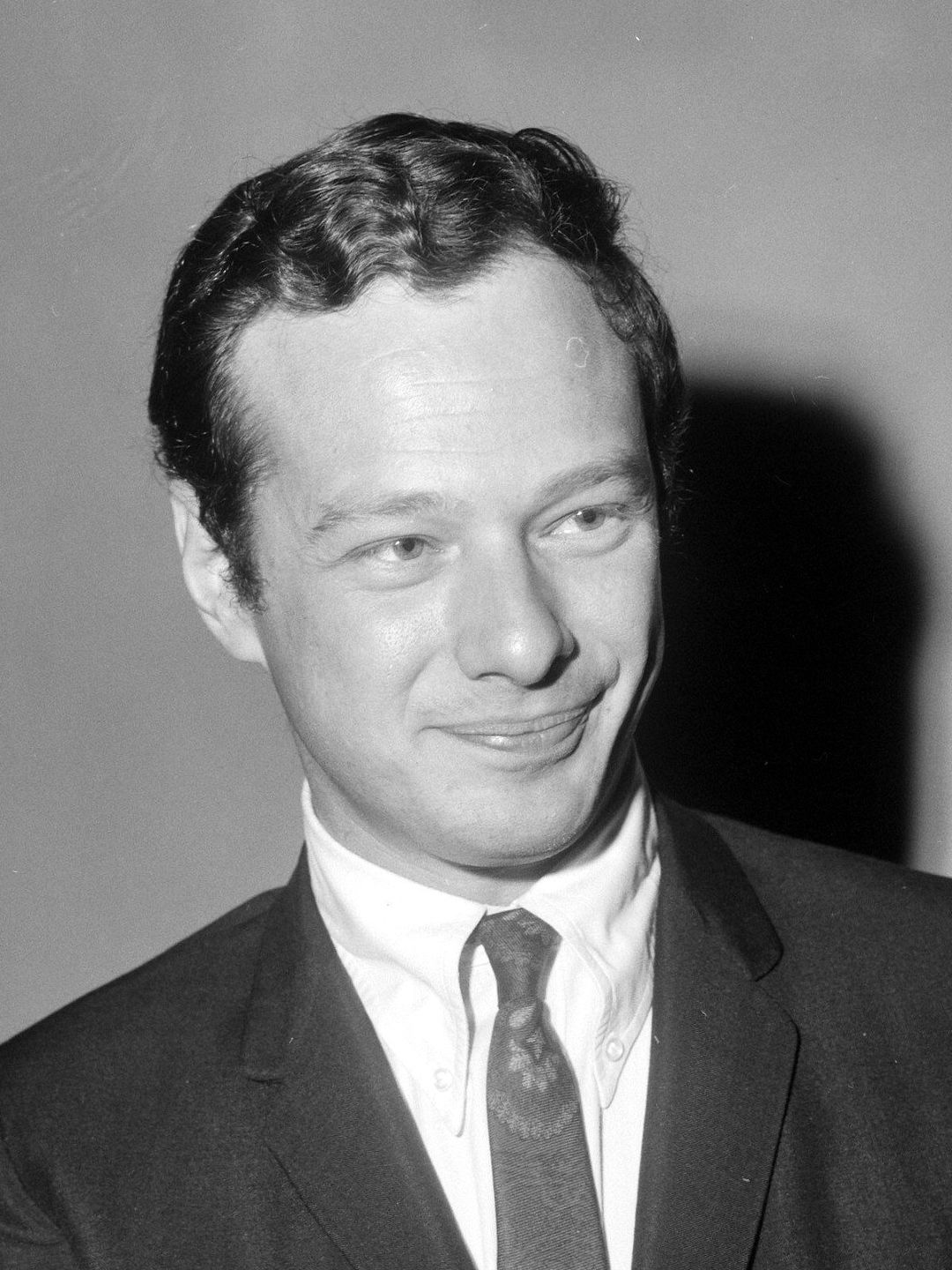 George Martin, being the perfectionist that usually was, insisted on them trying another take of the song “just in case.” "We did two takes," George Martin explained in the book "Anthology," "and after that John didn't have any voice left at all. It was good enough for the record." This was a complete "take two," not a false start, but John’s voice could not hold out any longer. The Beatles then insisted on hearing the album played back to them that evening. Back in the early '60s, John Lennon stated that, since they were “perfectionists,” hearing the album played back was one of their “most worrying experiences.” He said they may have wanted to “do it all over again” if they were not happy with it, but they decided that they “were very happy with the result.” This extended the session to 10:45 pm, at which time Brian Epstein, who had also been present for this historic day, gave Richard Langham a ride home to Camden Town. "The next morning Norman Smith and I took a tape (of the song) around all the studio copying rooms," remembers engineer Cris Neal, "saying to everybody, 'What the hell do you think of this!'" George Martin, being the perfectionist that usually was, insisted on them trying another take of the song “just in case.” "We did two takes," George Martin explained in the book "Anthology," "and after that John didn't have any voice left at all. It was good enough for the record." This was a complete "take two," not a false start, but John’s voice could not hold out any longer. The Beatles then insisted on hearing the album played back to them that evening. Back in the early '60s, John Lennon stated that, since they were “perfectionists,” hearing the album played back was one of their “most worrying experiences.” He said they may have wanted to “do it all over again” if they were not happy with it, but they decided that they “were very happy with the result.” This extended the session to 10:45 pm, at which time Brian Epstein, who had also been present for this historic day, gave Richard Langham a ride home to Camden Town. "The next morning Norman Smith and I took a tape (of the song) around all the studio copying rooms," remembers engineer Cris Neal, "saying to everybody, 'What the hell do you think of this!'"
The mono and stereo masters of "take one" of the song were made along with the rest of the album on February 25th, 1963. The version of “Twist And Shout” that thereafter shook the world is as was deemed complete on this day. It has remained untouched and unaltered ever since.
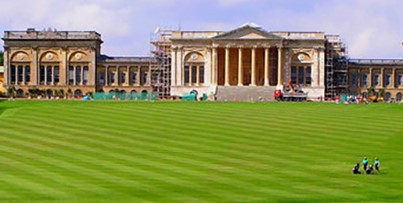 Interestingly, back on April 4th, 1963, a surprisingly clear private recording of the song was made by John Bloomfield, a fifteen-year-old student in the audience of Stowe School at Roxburgh Hall on his reel-to-reel tape recorder, The Beatles playing twenty-two songs between 6:30 to 7:30 pm. This all boys school, with minimal screaming girls in attendance, witnessed Lennon singing "Twist And Shout" just two weeks after their "Please Please Me" album, which contained the song, was released in the UK. Interestingly, back on April 4th, 1963, a surprisingly clear private recording of the song was made by John Bloomfield, a fifteen-year-old student in the audience of Stowe School at Roxburgh Hall on his reel-to-reel tape recorder, The Beatles playing twenty-two songs between 6:30 to 7:30 pm. This all boys school, with minimal screaming girls in attendance, witnessed Lennon singing "Twist And Shout" just two weeks after their "Please Please Me" album, which contained the song, was released in the UK.
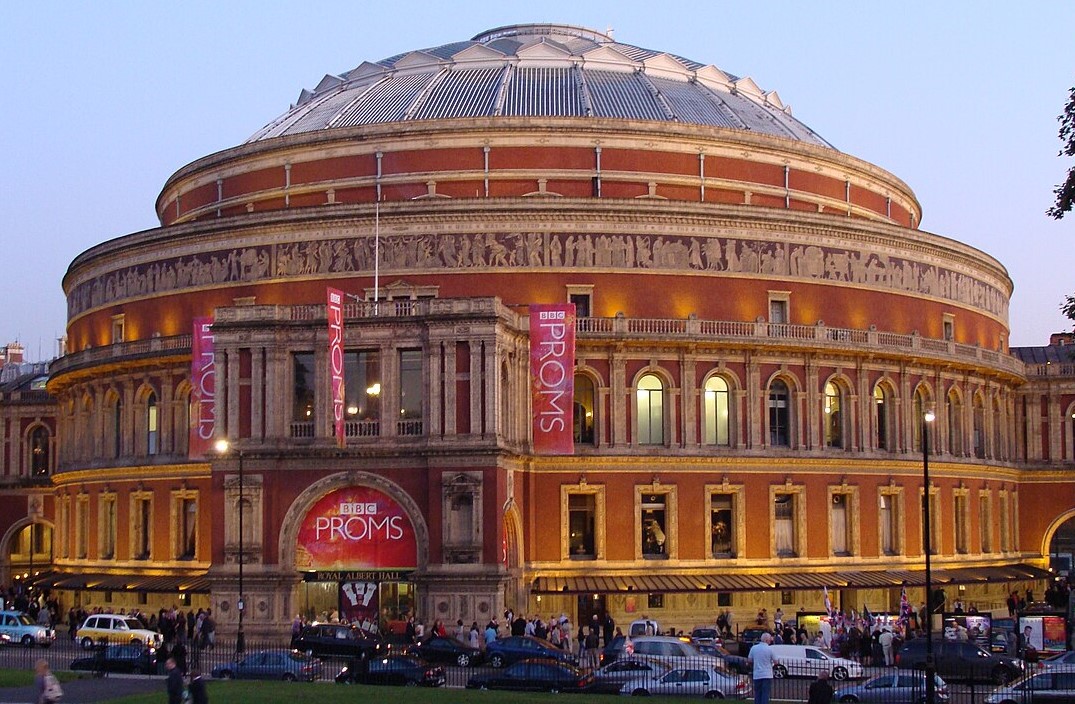 The second of their eleven BBC recordings of the song "Twist And Shout" was on April 18th, 1963, which was a live performance at the Royal Albert Hall in London for the BBC radio show "Swinging Sound '63." The recording, which was produced by Terry Henebery and Ron Belchier, took place between 9:10 and 10:15 pm on that day. Interestingly, after the show concluded, Paul first met his fiancee-to-be, aspiring young actress and "teen" TV personality Jane Asher, who posed earlier that evening for a photographer from Radio Times screaming for The Beatles. The second of their eleven BBC recordings of the song "Twist And Shout" was on April 18th, 1963, which was a live performance at the Royal Albert Hall in London for the BBC radio show "Swinging Sound '63." The recording, which was produced by Terry Henebery and Ron Belchier, took place between 9:10 and 10:15 pm on that day. Interestingly, after the show concluded, Paul first met his fiancee-to-be, aspiring young actress and "teen" TV personality Jane Asher, who posed earlier that evening for a photographer from Radio Times screaming for The Beatles.
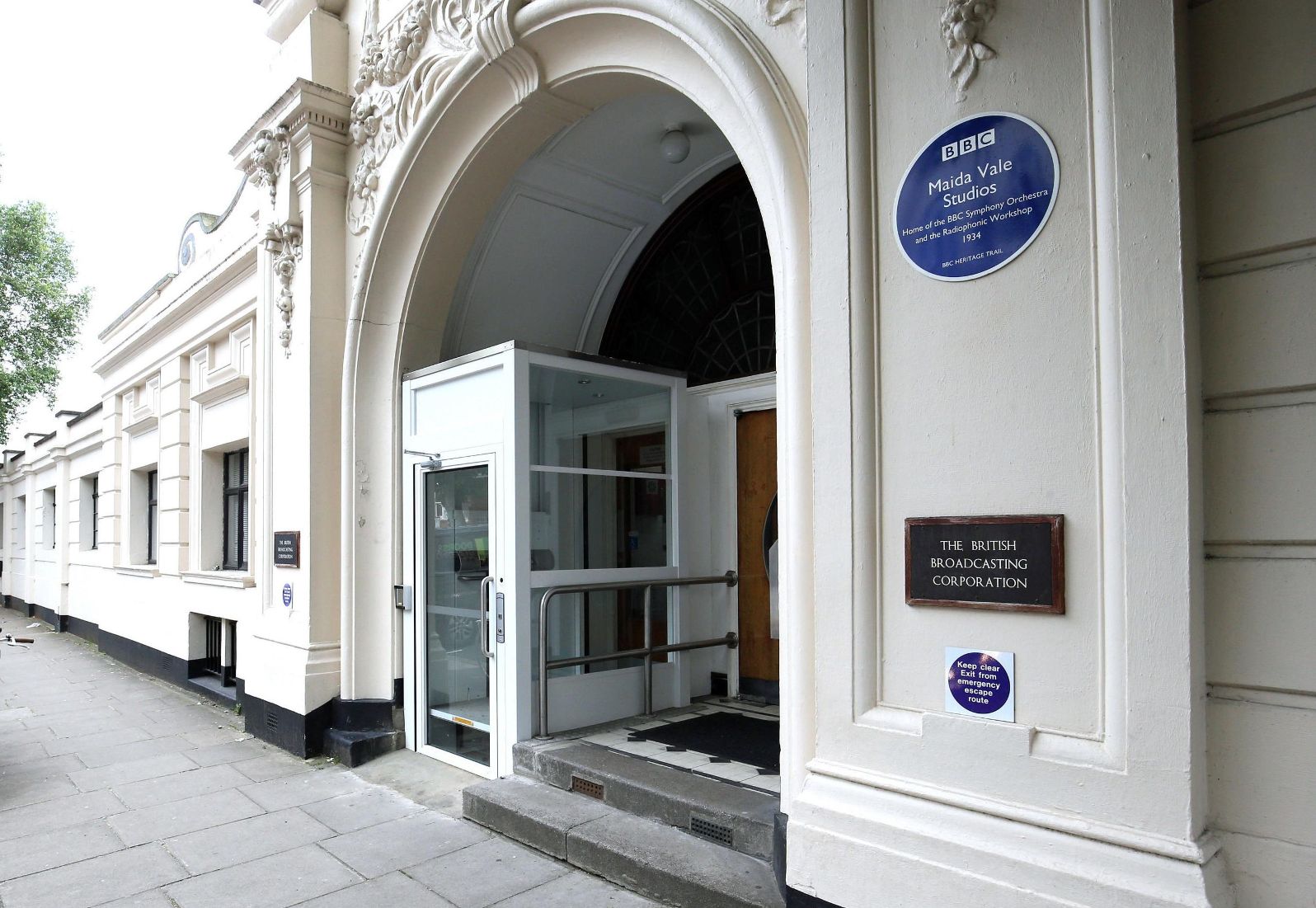 The next BBC recording of "Twist And Shout" was on May 21st, 1963 at The Playhouse Theatre in London between 10 and 11:15 pm before an enthusiastic audience for the BBC radio programme “Steppin’ Out,” which was produced by Terry Henebery but unfortunately not broadcast on that show. Then came the June 17th, 1963 recording of the song in Studio Five of Maida Vale Studios in London between 10:30 am and 1 pm for the fourth edition of their series “Pop Go The Beatles,” which was produced by Terry Henebery and broadcast on June 25th between 5 and 5:29 pm. The Beatles also recorded the song on July 3rd, 1963 at The Playhouse Theatre in Manchester between 8 and 9 pm before a live audience for "The Beat Show," this being produced by Geoff Lawrence and broadcast on July 4th, 1963 between 1 and 1:30 pm. The next BBC recording of "Twist And Shout" was on May 21st, 1963 at The Playhouse Theatre in London between 10 and 11:15 pm before an enthusiastic audience for the BBC radio programme “Steppin’ Out,” which was produced by Terry Henebery but unfortunately not broadcast on that show. Then came the June 17th, 1963 recording of the song in Studio Five of Maida Vale Studios in London between 10:30 am and 1 pm for the fourth edition of their series “Pop Go The Beatles,” which was produced by Terry Henebery and broadcast on June 25th between 5 and 5:29 pm. The Beatles also recorded the song on July 3rd, 1963 at The Playhouse Theatre in Manchester between 8 and 9 pm before a live audience for "The Beat Show," this being produced by Geoff Lawrence and broadcast on July 4th, 1963 between 1 and 1:30 pm.
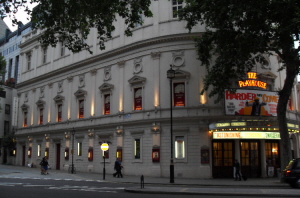 On July 16th, 1963, the band recorded it at BBC Paris Studio in London between 3 and 5:30 pm for the eighth edition of “Pop Go The Beatles,” this recording being produced by Terry Henebery and broadcast on August 6th between 5 and 5:29 pm. The next day (July 17th, 1963), they recorded the song at The Playhouse Theatre in London sometime between 8:45 and 9:45 pm for the radio show “Easy Beat,” which was produced by Ron Belchier and broadcast on July 21st between 10:31 and 11:30 am. On July 30th, 1963 they recorded the song at The Playhouse Theatre in London between 2:30 and 4:30 pm for “Saturday Club,” which was produced by Jimmy Grant and Bernie Andrews and broadcast on August 24th between 10 am and 12 noon. August 1st, 1963, saw them record the song at The Playhouse Theatre in Manchester between 1:30 and 4 pm for the eleventh edition of “Pop Go The Beatles,” which was produced by Terry Henebery and broadcast on August 27th between 5 and 5:29 pm. On July 16th, 1963, the band recorded it at BBC Paris Studio in London between 3 and 5:30 pm for the eighth edition of “Pop Go The Beatles,” this recording being produced by Terry Henebery and broadcast on August 6th between 5 and 5:29 pm. The next day (July 17th, 1963), they recorded the song at The Playhouse Theatre in London sometime between 8:45 and 9:45 pm for the radio show “Easy Beat,” which was produced by Ron Belchier and broadcast on July 21st between 10:31 and 11:30 am. On July 30th, 1963 they recorded the song at The Playhouse Theatre in London between 2:30 and 4:30 pm for “Saturday Club,” which was produced by Jimmy Grant and Bernie Andrews and broadcast on August 24th between 10 am and 12 noon. August 1st, 1963, saw them record the song at The Playhouse Theatre in Manchester between 1:30 and 4 pm for the eleventh edition of “Pop Go The Beatles,” which was produced by Terry Henebery and broadcast on August 27th between 5 and 5:29 pm.
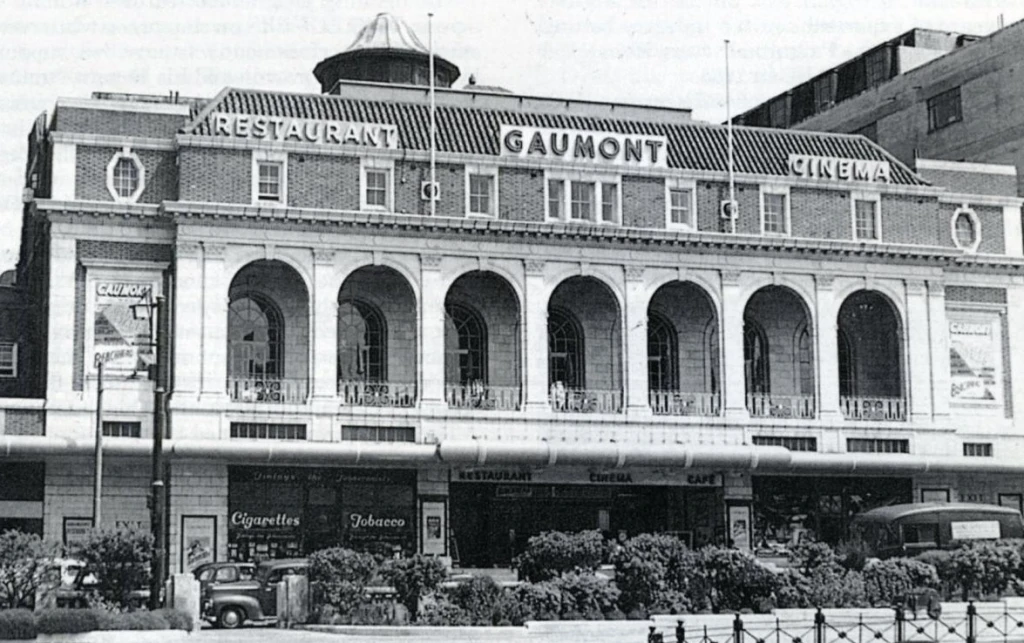 On August 21st, 1963, during a six consecutive night residency in Bournemouth, Hants, England, the chief technician at the Gaumont Cinema recorded The Beatles performance on his reel-to-reel tape recorder in order to check the venue's sound system. The final song on their set list that day was "Twist And Shout." This clear sounding 25-minute tape reel was sold by Christie's auction house for 25,300 pounds in 1998 and has not yet been made available commercially. On August 21st, 1963, during a six consecutive night residency in Bournemouth, Hants, England, the chief technician at the Gaumont Cinema recorded The Beatles performance on his reel-to-reel tape recorder in order to check the venue's sound system. The final song on their set list that day was "Twist And Shout." This clear sounding 25-minute tape reel was sold by Christie's auction house for 25,300 pounds in 1998 and has not yet been made available commercially.
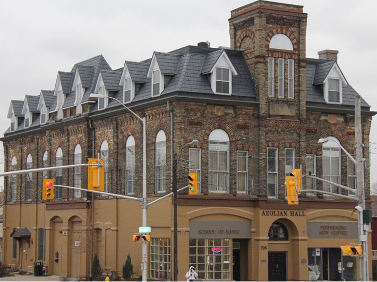 The first of the final two BBC recordings of "Twist And Shout" occurred on September 3rd, 1963 in Studio Two of Aeolian Hall in London between 8 and 10:30 pm for the fifteenth and final edition of “Pop Go The Beatles,” this being produced by Ian Grant and broadcast on September 24th between 5 and 5:29 pm. The final BBC radio recording of the song "Twist And Shout" was at the famous "Royal Command Performance" at the Prince Of Wales Theatre in London before a live audience including the Queen Mother, Princess Margaret and Lord Snowdon. Apart from being broadcast on British television, it was also aired on the BBC radio Light Programme on November 10th, 1963 between 7:35 and 8:30 pm. More details about this show are included below under "Live Performances." The first of the final two BBC recordings of "Twist And Shout" occurred on September 3rd, 1963 in Studio Two of Aeolian Hall in London between 8 and 10:30 pm for the fifteenth and final edition of “Pop Go The Beatles,” this being produced by Ian Grant and broadcast on September 24th between 5 and 5:29 pm. The final BBC radio recording of the song "Twist And Shout" was at the famous "Royal Command Performance" at the Prince Of Wales Theatre in London before a live audience including the Queen Mother, Princess Margaret and Lord Snowdon. Apart from being broadcast on British television, it was also aired on the BBC radio Light Programme on November 10th, 1963 between 7:35 and 8:30 pm. More details about this show are included below under "Live Performances."
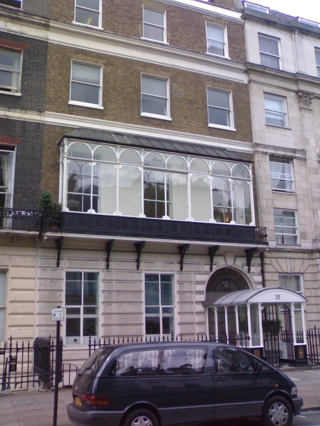 On April 19th, 1964, they made a further audio recording of the song at IBC Studios in London in preperation for the television special "Around The Beatles" which was first aired on British Television on May 6th, 1964. The Beatles arrived in the recording studio in the early evening on this day in April, recording seven selections on three-track tape with Terry Johnson as balance engineer and Glyn Johns as second engineer and tape operator. This session was over by 8:30 pm, all ready for The Beatles to mime to for the filming of the TV show on April 28th, 1964. On April 19th, 1964, they made a further audio recording of the song at IBC Studios in London in preperation for the television special "Around The Beatles" which was first aired on British Television on May 6th, 1964. The Beatles arrived in the recording studio in the early evening on this day in April, recording seven selections on three-track tape with Terry Johnson as balance engineer and Glyn Johns as second engineer and tape operator. This session was over by 8:30 pm, all ready for The Beatles to mime to for the filming of the TV show on April 28th, 1964.
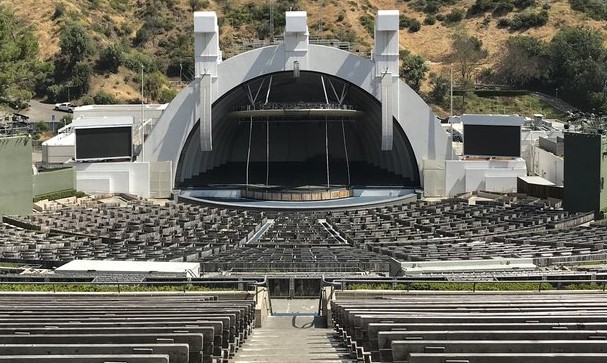 Then came their August 23rd, 1964 concert at the Hollywood Bowl in Los Angeles, California. This show was recorded with the intention of Capitol releasing a live album for the US market for 1964 Christmas sales. Capitol vice president Voyle Gilmore shared credit as producer with George Martin, Hugh Davies being indicated as engineer of the recording, the performances being captured on a three-track tape machine. Although the project was abandoned because of the "technical quality of the tapes," as the press said at the time, this version of "Twist And Shout" did get a partial release on the documentary LP "The Beatles' Story" released in November of 1964. Then came their August 23rd, 1964 concert at the Hollywood Bowl in Los Angeles, California. This show was recorded with the intention of Capitol releasing a live album for the US market for 1964 Christmas sales. Capitol vice president Voyle Gilmore shared credit as producer with George Martin, Hugh Davies being indicated as engineer of the recording, the performances being captured on a three-track tape machine. Although the project was abandoned because of the "technical quality of the tapes," as the press said at the time, this version of "Twist And Shout" did get a partial release on the documentary LP "The Beatles' Story" released in November of 1964.
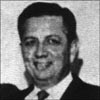 Capitol still desired a live Beatles album to be released, so both their August 29th and 30th, 1965 performances at the Hollywood Bowl were also recorded. The August 29th show was produced by Karl Engemann and engineered by Hugh Davies, while the August 30th performance was produced by Voyle Gilmore with Pete Abbott engineering, the same three-track tape machine being utilized. George Martin may not have been involved with the production in 1965, but he and engineer Geoff Emerick were given the master tapes on January 18th, 1977 for them to finally prepare a live album entitled "Beatles At The Hollywood Bowl," the engineering team completing the project by January 23rd, 1977 for release later in the year. The August 30th, 1965 recording of "Twist And Shout" was deemed acceptable for this release, which was a shortened version of the song due to it being too taxing for John to sing on tour. Capitol still desired a live Beatles album to be released, so both their August 29th and 30th, 1965 performances at the Hollywood Bowl were also recorded. The August 29th show was produced by Karl Engemann and engineered by Hugh Davies, while the August 30th performance was produced by Voyle Gilmore with Pete Abbott engineering, the same three-track tape machine being utilized. George Martin may not have been involved with the production in 1965, but he and engineer Geoff Emerick were given the master tapes on January 18th, 1977 for them to finally prepare a live album entitled "Beatles At The Hollywood Bowl," the engineering team completing the project by January 23rd, 1977 for release later in the year. The August 30th, 1965 recording of "Twist And Shout" was deemed acceptable for this release, which was a shortened version of the song due to it being too taxing for John to sing on tour.
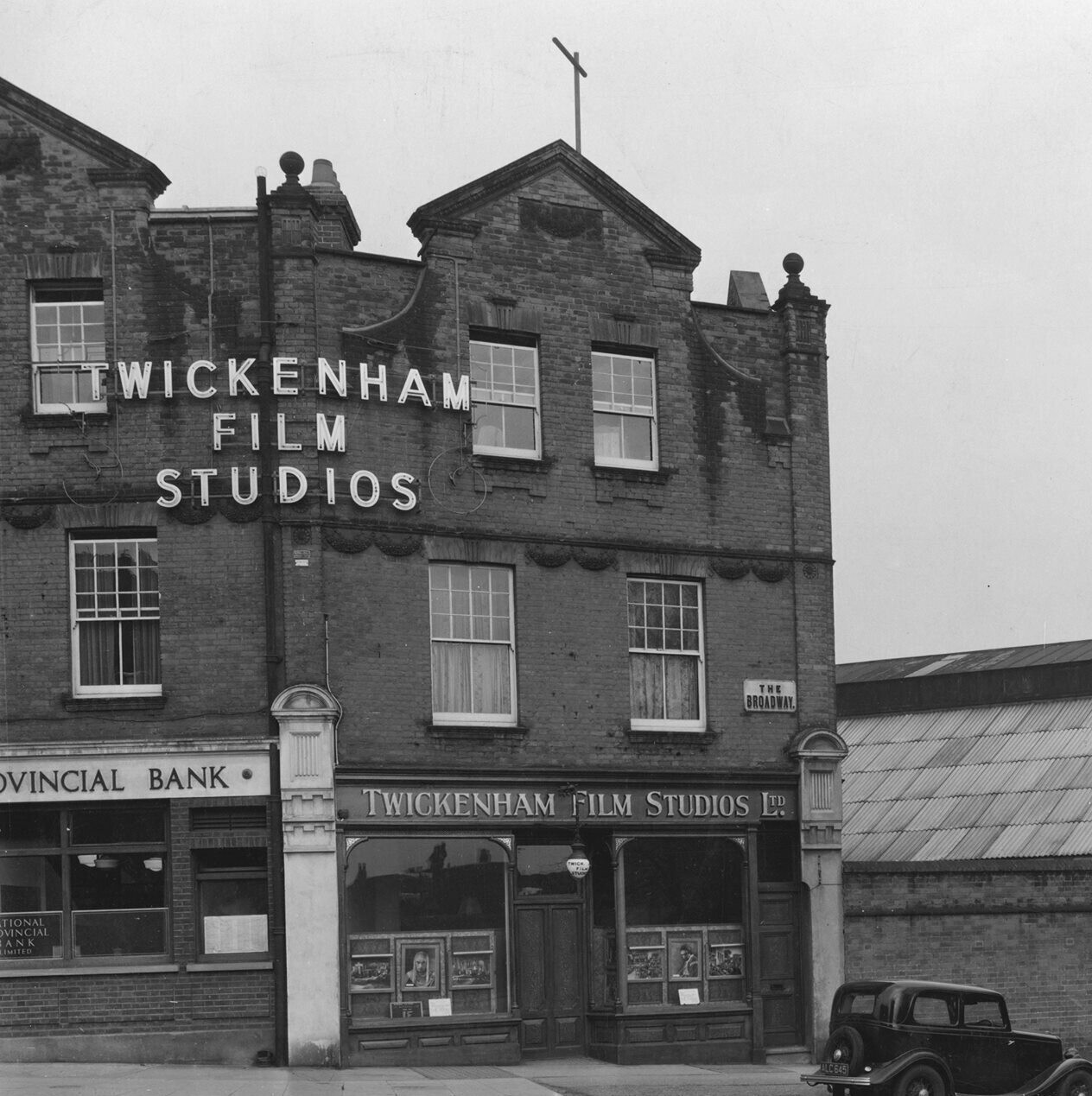 To give a complete recording history for this song, two additional takes of "Twist And Shout" did occur in January of 1969 during their rehearsals for what eventually was released as the "Let It Be" album and movie. The first was on January 8th at Twickenham Film Studios and the second was on January 26th at Apple Studios. Neither of these brief attempts were included on the album or in the movie, nor were they released officially in any form. Incidentally, Glyn Johns, who is mentioned above as second engineer at their IBC Studio session on April 19th, 1964, was hired as producer for this Beatles project. To give a complete recording history for this song, two additional takes of "Twist And Shout" did occur in January of 1969 during their rehearsals for what eventually was released as the "Let It Be" album and movie. The first was on January 8th at Twickenham Film Studios and the second was on January 26th at Apple Studios. Neither of these brief attempts were included on the album or in the movie, nor were they released officially in any form. Incidentally, Glyn Johns, who is mentioned above as second engineer at their IBC Studio session on April 19th, 1964, was hired as producer for this Beatles project.
 Sometime in 2023, Giles Martin was given the task of creating a "demix remix" of "Twist And Shout" to be included as a new track on the 50th Anniversary edition of the compilation album "The Beatles / 1962 - 1966" ("The Red Album"). With Peter Jackson's AI technology at his disposal, Giles Martin was now able to utilize this "new machine-learning techology" so that "individual elements that were put to tape...and were therefore impossible to separate" could be "untangled, allowing Giles Martin to put the original recordings back together with even greater clarity and impact," as stated by John Harris in the liner notes of the above mentioned album. The results were very good, the vibrancy of George's guitar in the left channel and John's in the right during the solo section being of particular note. Sometime in 2023, Giles Martin was given the task of creating a "demix remix" of "Twist And Shout" to be included as a new track on the 50th Anniversary edition of the compilation album "The Beatles / 1962 - 1966" ("The Red Album"). With Peter Jackson's AI technology at his disposal, Giles Martin was now able to utilize this "new machine-learning techology" so that "individual elements that were put to tape...and were therefore impossible to separate" could be "untangled, allowing Giles Martin to put the original recordings back together with even greater clarity and impact," as stated by John Harris in the liner notes of the above mentioned album. The results were very good, the vibrancy of George's guitar in the left channel and John's in the right during the solo section being of particular note.
Song Structure and Style
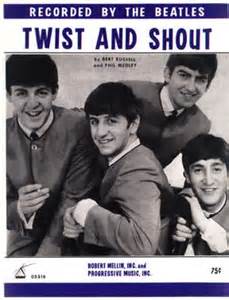 This song was primarily written with verses only, which makes it unique on this album as well as in the entire Beatles catalog. For the sake of continuity, we will refer to the instrumental "solo" with the vocal arpeggio as the song's bridge, since this section appears in-between the second and third verses and relieves the tension created in the first two verses. This, therefore, places this song in the same general format as most of the rest of the LP, namely 'verse /verse /bridge /verse' (or aaba). However, there is more here than meets the eye. This song was primarily written with verses only, which makes it unique on this album as well as in the entire Beatles catalog. For the sake of continuity, we will refer to the instrumental "solo" with the vocal arpeggio as the song's bridge, since this section appears in-between the second and third verses and relieves the tension created in the first two verses. This, therefore, places this song in the same general format as most of the rest of the LP, namely 'verse /verse /bridge /verse' (or aaba). However, there is more here than meets the eye.
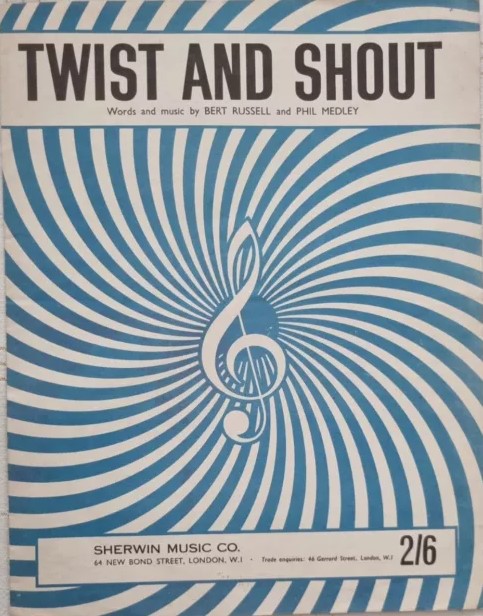 First we have a four measure instrumental introduction to create an anticipatory feeling. We then dive headlong into their first exciting verse with its call and response delivery, the verse being 16 measures long. The second 16-measure verse then follows immediately afterwards which changes the lyrics only in the second half of the verse. The bridge then follows, which is actually a two-part section that totals 14 measures. The first eight of these measures make up the instrumental "solo" section of the song, while the remaining six measures contain the climatic vocal arpeggio that leads directly back into the third verse, identical to the first verse. First we have a four measure instrumental introduction to create an anticipatory feeling. We then dive headlong into their first exciting verse with its call and response delivery, the verse being 16 measures long. The second 16-measure verse then follows immediately afterwards which changes the lyrics only in the second half of the verse. The bridge then follows, which is actually a two-part section that totals 14 measures. The first eight of these measures make up the instrumental "solo" section of the song, while the remaining six measures contain the climatic vocal arpeggio that leads directly back into the third verse, identical to the first verse.
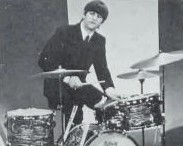 Up until now, the structure of the song is identical to the Isley Brothers version which is the rendition that influenced The Beatles to perform it. At this point, they adapt the Isley Brothers version in order to create a fitting resolve that would be suitable to performing it live. This was deemed to be necessary because of the fade out "vamping" that completes the song on the Isley Brothers record. The Beatles perform six measures of this "vamping" to simulate what the Isley Brothers did to end their version of the song, but then they go into an additional five measures to partially repeat the climatic arpeggio before creating a rousing resolve accented with tight triplets. Up until now, the structure of the song is identical to the Isley Brothers version which is the rendition that influenced The Beatles to perform it. At this point, they adapt the Isley Brothers version in order to create a fitting resolve that would be suitable to performing it live. This was deemed to be necessary because of the fade out "vamping" that completes the song on the Isley Brothers record. The Beatles perform six measures of this "vamping" to simulate what the Isley Brothers did to end their version of the song, but then they go into an additional five measures to partially repeat the climatic arpeggio before creating a rousing resolve accented with tight triplets.
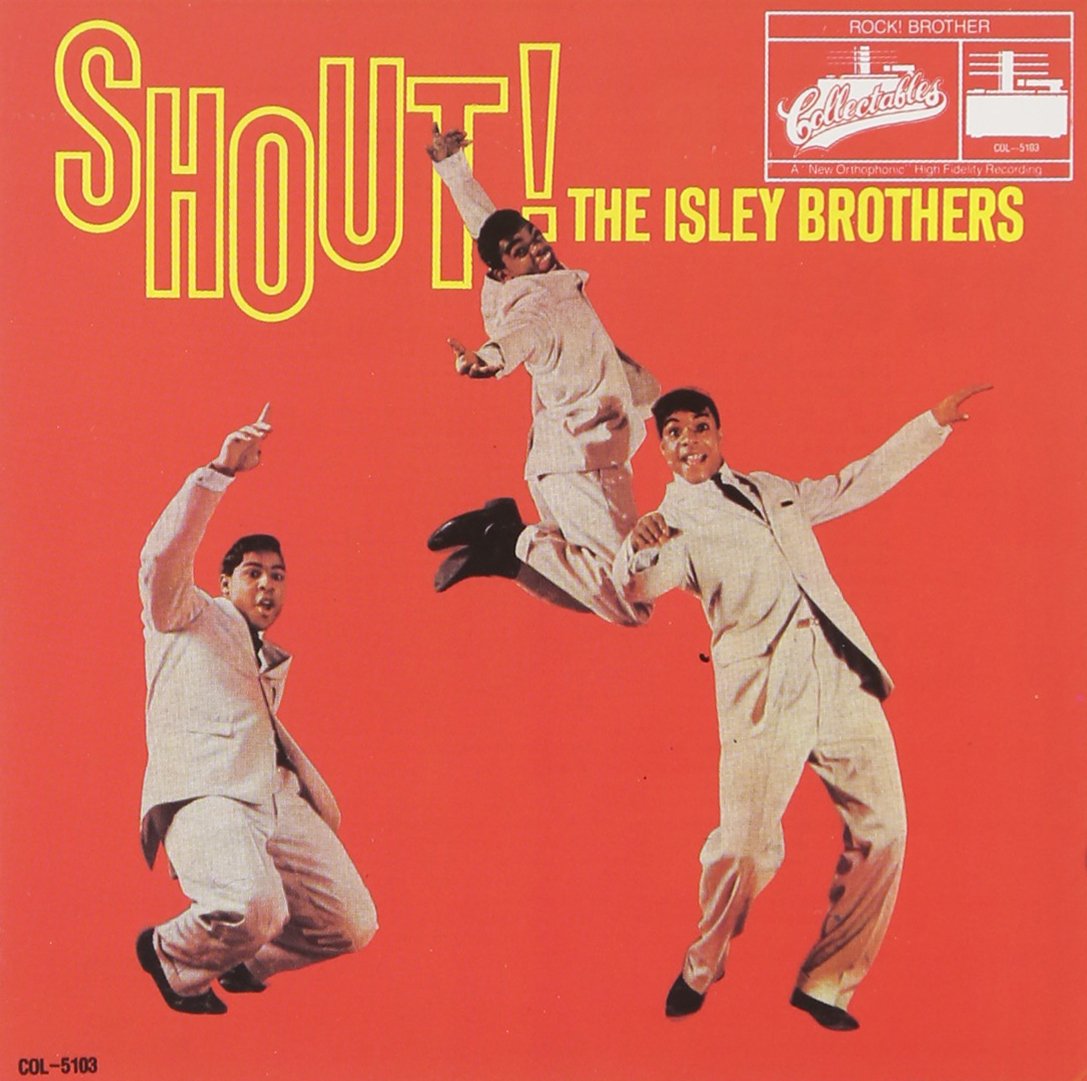 A unique aspect of The Beatles recording of this song as compared to The Isley Brothers is that it is transformed from a pop/R&B performance with a touch of Latin influence into the hardest rock 'n' roll Beatles recording created thus far. Gone was the brass instrumental "solo" section of the song, replaced by guitar. Gone were the R&B sounding response harmonies, replaced by British accents. Gone were the repeated "vamping" vocal work at the conclusion of the song, replaced by a second arpeggio and suitable stage ending. While The Isley Brothers impressively took the “twist” craze into a more respectable R&B categorization, The Beatles took the same classic song into rock and roll where it will forever be. A unique aspect of The Beatles recording of this song as compared to The Isley Brothers is that it is transformed from a pop/R&B performance with a touch of Latin influence into the hardest rock 'n' roll Beatles recording created thus far. Gone was the brass instrumental "solo" section of the song, replaced by guitar. Gone were the R&B sounding response harmonies, replaced by British accents. Gone were the repeated "vamping" vocal work at the conclusion of the song, replaced by a second arpeggio and suitable stage ending. While The Isley Brothers impressively took the “twist” craze into a more respectable R&B categorization, The Beatles took the same classic song into rock and roll where it will forever be.
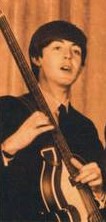 As for The Beatles' performance of the song, all four of them are at their peak, which is an understatement when you consider the "chills-down-the-spine" sensation the song creates. One can only imagine being in the recording studio to hear this actual "once in a lifetime" performance as it happened. Those who actually were present attest to the excitement created by four guys who, after recording for more than 12 hours with hardly a break, gave what many claim to be the finest performance of their entire career. Paul himself even shouts a congratulatory “yeah” when the final chord of the song is ringing out, acknowledging that something exceptionally great has just happened. As for The Beatles' performance of the song, all four of them are at their peak, which is an understatement when you consider the "chills-down-the-spine" sensation the song creates. One can only imagine being in the recording studio to hear this actual "once in a lifetime" performance as it happened. Those who actually were present attest to the excitement created by four guys who, after recording for more than 12 hours with hardly a break, gave what many claim to be the finest performance of their entire career. Paul himself even shouts a congratulatory “yeah” when the final chord of the song is ringing out, acknowledging that something exceptionally great has just happened.
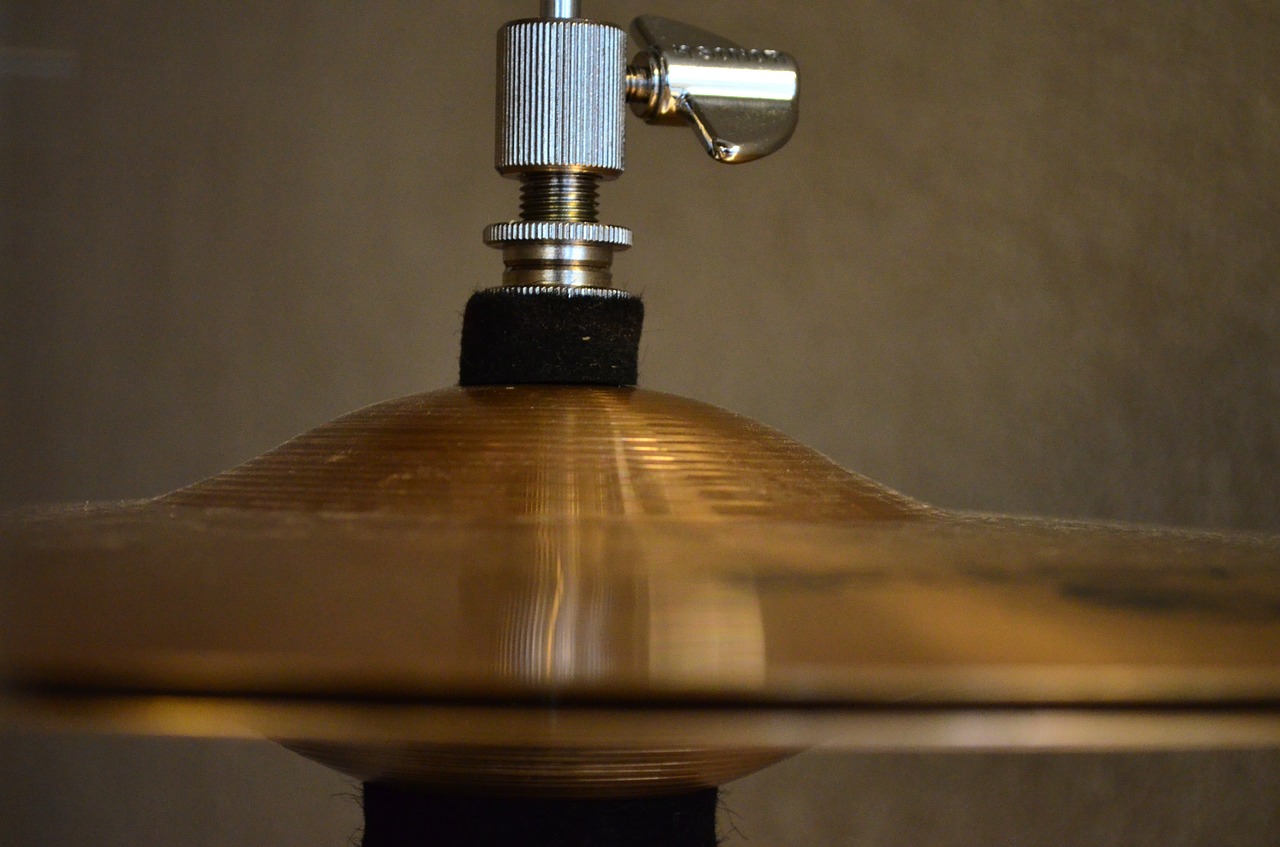 Ringo pounds on the drums harder during "Twist And Shout" than on any other track on this entire album. His appropriate drum fills, as well as knowing when to effectively keep the steady beat on either the high-hat or ride cymbal, gives the song its hard drive from beginning to end. The tight accents Ringo performs, such as during both arpeggios and at the song's conclusion, show how rehearsal always equates to perfection, keeping in mind that this was The Beatles' first attempt at the song that day. Ringo pounds on the drums harder during "Twist And Shout" than on any other track on this entire album. His appropriate drum fills, as well as knowing when to effectively keep the steady beat on either the high-hat or ride cymbal, gives the song its hard drive from beginning to end. The tight accents Ringo performs, such as during both arpeggios and at the song's conclusion, show how rehearsal always equates to perfection, keeping in mind that this was The Beatles' first attempt at the song that day.
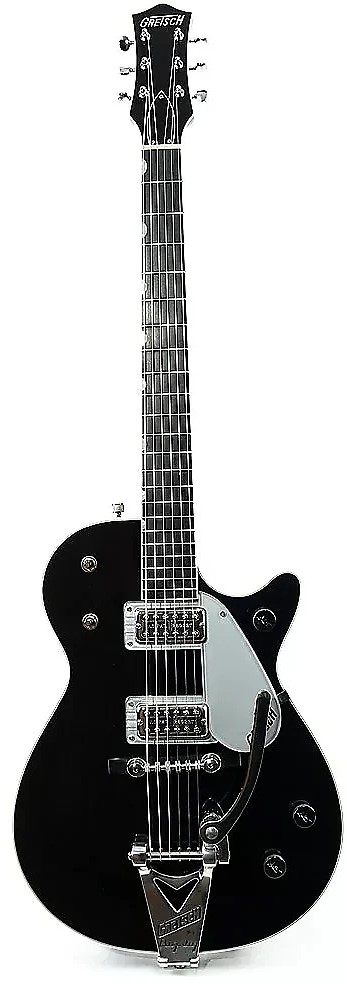 Both Harrison and McCartney play their respective instruments with well rehearsed accuracy and enthusiasm. Their harmonies, while not major attention-getters on the recording, are essential ingredients that add the needed flavor and excitement into the overall performance. Not a hint of faltering can be detected in their spot-on two part harmonies as well as their “woo” accents after every eight bars of each verse. Both Harrison and McCartney play their respective instruments with well rehearsed accuracy and enthusiasm. Their harmonies, while not major attention-getters on the recording, are essential ingredients that add the needed flavor and excitement into the overall performance. Not a hint of faltering can be detected in their spot-on two part harmonies as well as their “woo” accents after every eight bars of each verse.
The most noteworthy performance here of course goes to John Lennon for his ground-breaking vocal work. They had learned the song in a key at the top of his vocal range, so Lennon knew it would be a challenge from the start considering the condition of his throat at the time. This proved to be advantageous, giving a rough and uninhibited quality to his vocal performance, creating the blueprint for all rock and roll acts to follow.
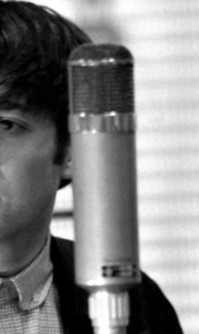 What seems incredibly fortuitous is how his voice cracked habitually on the "one-beat" of the measure, usually on the word “baby.” Ironically, the imperfections in John’s vocals on this recording led to him performing the perfect vocals possible for the song. When John's pitch started to waver, such as at the beginning of the first trademark arpeggio, the nearly perfect layers of harmonies from George and then Paul covered for it and then climaxed into "whoops" and screams which made it an excited transition into the final verse. And when Lennon finally hit his vocal limit during the closing “shake it, shake it baby” lines, it only added to the ‘wild abandon’ feeling that helped define rock and roll. John even quietly acknowledges his vocal accomplishment by uttering a sigh of pain discernable in the final seconds of the song. Ironically, Lennon went on record in 1976, as quoted in the "Anthology" book, as saying, "I was always bitterly ashamed of it, because I could sing it better than that; but now it doesn't bother me" What seems incredibly fortuitous is how his voice cracked habitually on the "one-beat" of the measure, usually on the word “baby.” Ironically, the imperfections in John’s vocals on this recording led to him performing the perfect vocals possible for the song. When John's pitch started to waver, such as at the beginning of the first trademark arpeggio, the nearly perfect layers of harmonies from George and then Paul covered for it and then climaxed into "whoops" and screams which made it an excited transition into the final verse. And when Lennon finally hit his vocal limit during the closing “shake it, shake it baby” lines, it only added to the ‘wild abandon’ feeling that helped define rock and roll. John even quietly acknowledges his vocal accomplishment by uttering a sigh of pain discernable in the final seconds of the song. Ironically, Lennon went on record in 1976, as quoted in the "Anthology" book, as saying, "I was always bitterly ashamed of it, because I could sing it better than that; but now it doesn't bother me"
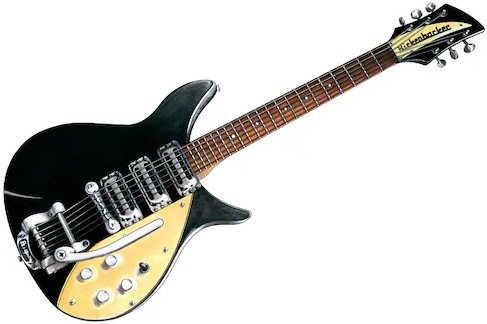 In order to complete the picture, it must be mentioned that Lennon’s rhythm guitar, while not extraordinary, was performed simultaneously with his exceptional vocal delivery. That is a major indication of a talented musician and performer. If, when you are physically tired and sick, you can still pull off the performance of a lifetime vocally and simultaneously perform top-notch rhythm guitar, that is truly a feat in itself. In order to complete the picture, it must be mentioned that Lennon’s rhythm guitar, while not extraordinary, was performed simultaneously with his exceptional vocal delivery. That is a major indication of a talented musician and performer. If, when you are physically tired and sick, you can still pull off the performance of a lifetime vocally and simultaneously perform top-notch rhythm guitar, that is truly a feat in itself.
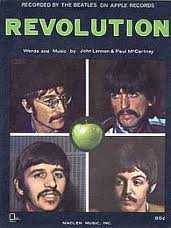 As time progressed, it can be noted that The Beatles' recording of “Twist And Shout” back in 1963 was a learning experience that they utilized later with their own compositions. No other song was recorded with comparable intensity by The Beatles up to this time, but this milestone would soon be repeated and also maintained throughout their entire career. Would the intensity of “Revolution,” “Helter Skelter” or even “I Want You (She’s So Heavy)” ever have been if it wasn’t for “Twist And Shout” before it? How about the question/answer harmony vocals of “I’m Down” or “With A Little Help From My Friends?” One can only speculate, but upon our examination of their catalog, we can easily see how their songwriting grew and expanded as well as compare similarities with their classic interpretation of “Twist And Shout.” As time progressed, it can be noted that The Beatles' recording of “Twist And Shout” back in 1963 was a learning experience that they utilized later with their own compositions. No other song was recorded with comparable intensity by The Beatles up to this time, but this milestone would soon be repeated and also maintained throughout their entire career. Would the intensity of “Revolution,” “Helter Skelter” or even “I Want You (She’s So Heavy)” ever have been if it wasn’t for “Twist And Shout” before it? How about the question/answer harmony vocals of “I’m Down” or “With A Little Help From My Friends?” One can only speculate, but upon our examination of their catalog, we can easily see how their songwriting grew and expanded as well as compare similarities with their classic interpretation of “Twist And Shout.”
American Releases
The first US exposure to The Beatle's version of “Twist And Shout” was on the Vee-Jay album “Introducing…The Beatles,” released January 10th, 1964. This album peaked at #2 on the US Billboard album chart, just under Capitol's "Meet The Beatles!" album at #1.
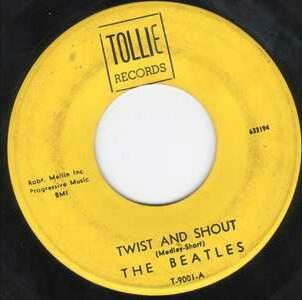 On February 9th, 1964, The Beatles taped three songs in the Ed Sullivan Studios to be aired two weeks later on the February 23rd Ed Sullivan Show. The first of those three songs was “Twist And Shout.” With this in mind, Vee-Jay records decided to release the song as a new single, the very first release on their new Tollie Records subsidiary. It reached #2 on the Billboard Hot 100 and would no doubt have topped the chart if it hadn’t been for the March release of their second Capitol Records single “Can’t Buy Me Love,” which leaped to #1 in its second week on the Billboard Hot 100. On February 9th, 1964, The Beatles taped three songs in the Ed Sullivan Studios to be aired two weeks later on the February 23rd Ed Sullivan Show. The first of those three songs was “Twist And Shout.” With this in mind, Vee-Jay records decided to release the song as a new single, the very first release on their new Tollie Records subsidiary. It reached #2 on the Billboard Hot 100 and would no doubt have topped the chart if it hadn’t been for the March release of their second Capitol Records single “Can’t Buy Me Love,” which leaped to #1 in its second week on the Billboard Hot 100.
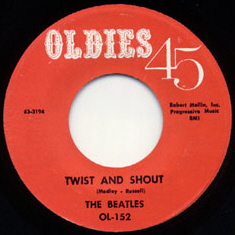 The next US release of the song occurred in August of 1964 with the re-release of the Tollie single on the Vee-Jay “Oldies 45” label. It was then released on October 1st, 1964 on the Vee-Jay double-album “The Beatles vs. The Four Seasons,” which coupled the “Introducing…The Beatles” album with “The Golden Hits of the Four Seasons.” The next appearance of the song came less than two weeks later with another repackage of the Vee-Jay album under the new name “Songs, Pictures And Stories Of The Fabulous Beatles,” released on October 12th, 1964. The next US release of the song occurred in August of 1964 with the re-release of the Tollie single on the Vee-Jay “Oldies 45” label. It was then released on October 1st, 1964 on the Vee-Jay double-album “The Beatles vs. The Four Seasons,” which coupled the “Introducing…The Beatles” album with “The Golden Hits of the Four Seasons.” The next appearance of the song came less than two weeks later with another repackage of the Vee-Jay album under the new name “Songs, Pictures And Stories Of The Fabulous Beatles,” released on October 12th, 1964.
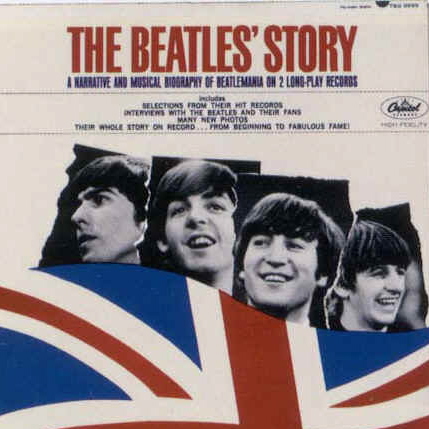 As stated earlier, Capitol Records gained possession of the song in October of 1964. The first appearance in any form on Capitol was a partial version of the song as the group performed it at the Hollywood Bowl on the documentary double album “The Beatles’ Story.” This was taken from their August 23rd, 1964 performance, this not being made available anywhere else but on this album. Although this is only a partial version of "Twist And Shout," it is noteworthy because of its rarity. Surprisingly, "The Beatles' Story" was also released on compact disc on January 21st, 2014, but only as contained in the 13 album box set "The US Albums." As stated earlier, Capitol Records gained possession of the song in October of 1964. The first appearance in any form on Capitol was a partial version of the song as the group performed it at the Hollywood Bowl on the documentary double album “The Beatles’ Story.” This was taken from their August 23rd, 1964 performance, this not being made available anywhere else but on this album. Although this is only a partial version of "Twist And Shout," it is noteworthy because of its rarity. Surprisingly, "The Beatles' Story" was also released on compact disc on January 21st, 2014, but only as contained in the 13 album box set "The US Albums."
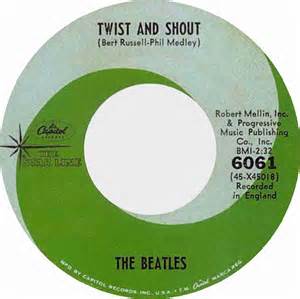 Capitol then released “Twist And Shout” on their album “The Early Beatles” in March of 1965. Capitalizing on it being a huge US hit, they positioned it as the second song on side one. Incidentally, mono copies of this album contained a "Type B" mix of the songs created by Capitol that combined both channels of the stereo mix into one, the legitimate mono mix of "Twist And Shout" created by George Martin being made available on the previous Vee-Jay releases. This Capitol LP eventually appeared on an individual CD on January 21st, 2014, this CD containing both the mono and stereo mixes on one disc."The Early Beatles" album in 1965 was followed by the song's release as a Capitol single on the comapny's Starline budget label on October 11th, 1965. Capitol then released “Twist And Shout” on their album “The Early Beatles” in March of 1965. Capitalizing on it being a huge US hit, they positioned it as the second song on side one. Incidentally, mono copies of this album contained a "Type B" mix of the songs created by Capitol that combined both channels of the stereo mix into one, the legitimate mono mix of "Twist And Shout" created by George Martin being made available on the previous Vee-Jay releases. This Capitol LP eventually appeared on an individual CD on January 21st, 2014, this CD containing both the mono and stereo mixes on one disc."The Early Beatles" album in 1965 was followed by the song's release as a Capitol single on the comapny's Starline budget label on October 11th, 1965.
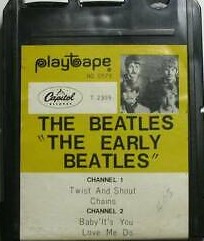 Sometime during 1967, Capitol released Beatles music on a brand new but short-lived format called "Playtapes." These tape cartridges did not have the capability to include entire albums, so two truncated four-song versions of "The Early Beatles" were released in this portable format, "Twist And Shout" being on one of these. Beatles "Playtapes" are highly collectable today. Sometime during 1967, Capitol released Beatles music on a brand new but short-lived format called "Playtapes." These tape cartridges did not have the capability to include entire albums, so two truncated four-song versions of "The Early Beatles" were released in this portable format, "Twist And Shout" being on one of these. Beatles "Playtapes" are highly collectable today.
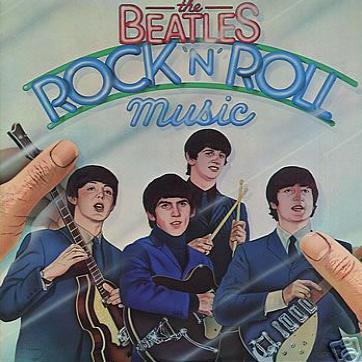 The song was left off of the “1962 – 1966” greatest hits package of 1973 (aka, the “Red Album") because of it not being an original Beatles composition, but the companion double-album of June 1976, “Rock ‘n’ Roll Music,” featured the song as its opening track. George Martin was consulted regarding the preparation of this album and, with access to only the Capitol mixes, made a few noticeable changes. The original stereo mix had all instruments on the left channel and all vocals on the right channel. For this album, George Martin centered the instruments in both channels and placed the vocal track slightly to the left. He also boosted the bass in the right channel and raised the treble in the left channel. The song was left off of the “1962 – 1966” greatest hits package of 1973 (aka, the “Red Album") because of it not being an original Beatles composition, but the companion double-album of June 1976, “Rock ‘n’ Roll Music,” featured the song as its opening track. George Martin was consulted regarding the preparation of this album and, with access to only the Capitol mixes, made a few noticeable changes. The original stereo mix had all instruments on the left channel and all vocals on the right channel. For this album, George Martin centered the instruments in both channels and placed the vocal track slightly to the left. He also boosted the bass in the right channel and raised the treble in the left channel.
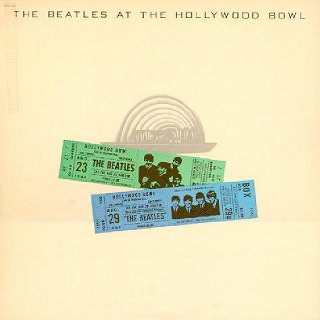 The next release of the song was as a live version that was originally recorded on August 30th, 1965 at the Hollywood Bowl. The Capitol album “The Beatles At The Hollywood Bowl” was released on May 4th, 1977 and, since a resurgence in Beatles popularity was under way, ended up peaking at #2 on the Billboard album chart. This album was eventually remastered by Giles Martin and re-released on September 9th, 2016 with the title "Live At The Hollywood Bowl," "Twist And Shout" still being the opening track of the album. The next release of the song was as a live version that was originally recorded on August 30th, 1965 at the Hollywood Bowl. The Capitol album “The Beatles At The Hollywood Bowl” was released on May 4th, 1977 and, since a resurgence in Beatles popularity was under way, ended up peaking at #2 on the Billboard album chart. This album was eventually remastered by Giles Martin and re-released on September 9th, 2016 with the title "Live At The Hollywood Bowl," "Twist And Shout" still being the opening track of the album.
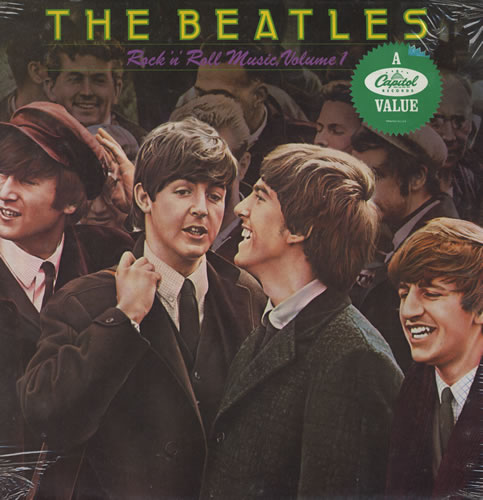 The next release was actually a re-release of the “Rock ‘n’ Roll Music” double LP of 1976 but now in two single albums for budget sales. The first volume, “Rock ‘n’ Roll Music Volume 1,” featured "Twist And Shout" as the opening song. This was released on October 27th, 1980. The next release was actually a re-release of the “Rock ‘n’ Roll Music” double LP of 1976 but now in two single albums for budget sales. The first volume, “Rock ‘n’ Roll Music Volume 1,” featured "Twist And Shout" as the opening song. This was released on October 27th, 1980.
1981 saw the next release of the song on an LP called "Live 1962, Hamburg Germany" on the Hall Of Music label. This live performance took place during the group's 1962 Christmas season in Hamburg and was recorded from the audience with a portable Grundig reel-to-reel tape recorder.
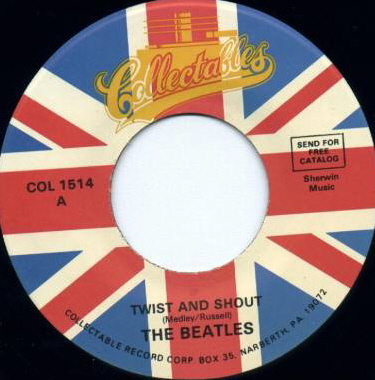 In 1982, the Collectables label distributed a single featuring the Hamburg, Germany version of the song as the b-side to the Lennon / McCartney original "Ask Me Why," which was also recorded during The Beatles' 1962 Christmas season in Hamburg. This short-lived 45 has become quite a collectable today. In 1982, the Collectables label distributed a single featuring the Hamburg, Germany version of the song as the b-side to the Lennon / McCartney original "Ask Me Why," which was also recorded during The Beatles' 1962 Christmas season in Hamburg. This short-lived 45 has become quite a collectable today.
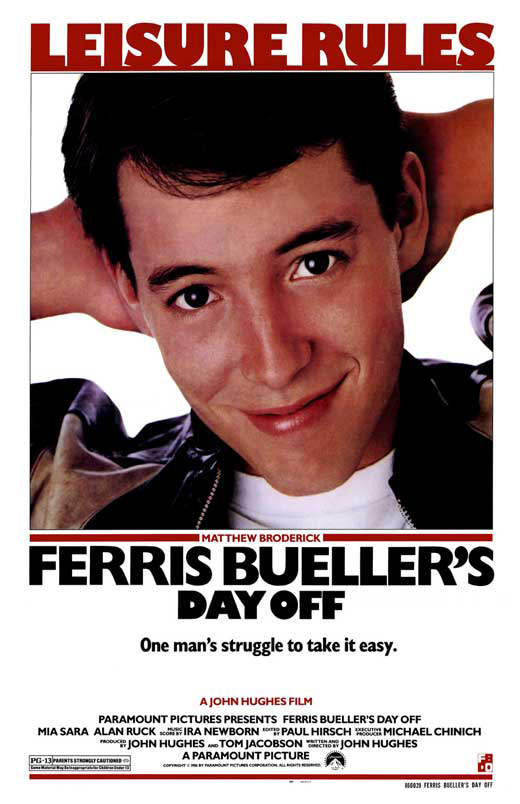 Proving that you just can’t keep a good song down, it had a resurgence of popularity in 1986 by being featured in two very successful movies simultaneously. Matthew Broderick lip-synced to the song on the hugely successful film “Ferris Bueller’s Day Off,” while Rodney Dangerfield sang (sort of) the song in his film “Back To School.” All this attention led to Capitol Records re-releasing the original single, which propelled the song back up the Billboard Hot 100, peaking at #23. Proving that you just can’t keep a good song down, it had a resurgence of popularity in 1986 by being featured in two very successful movies simultaneously. Matthew Broderick lip-synced to the song on the hugely successful film “Ferris Bueller’s Day Off,” while Rodney Dangerfield sang (sort of) the song in his film “Back To School.” All this attention led to Capitol Records re-releasing the original single, which propelled the song back up the Billboard Hot 100, peaking at #23.
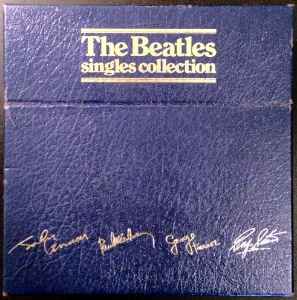 On December 6th, 1982, a vinyl box set called "The Beatles Singles Collection" was released worldwide that included a single version of "Twist And Shout" as the b-side of "Back In The USSR," this release being totally new to the US market. This single was released in the UK in July of 1976 and was considered an official Beatles release when the company was assembling this box set, although it was dropped when it was reissued as a CD box set in 1992 and as a new vinyl box set in 2019. On December 6th, 1982, a vinyl box set called "The Beatles Singles Collection" was released worldwide that included a single version of "Twist And Shout" as the b-side of "Back In The USSR," this release being totally new to the US market. This single was released in the UK in July of 1976 and was considered an official Beatles release when the company was assembling this box set, although it was dropped when it was reissued as a CD box set in 1992 and as a new vinyl box set in 2019.
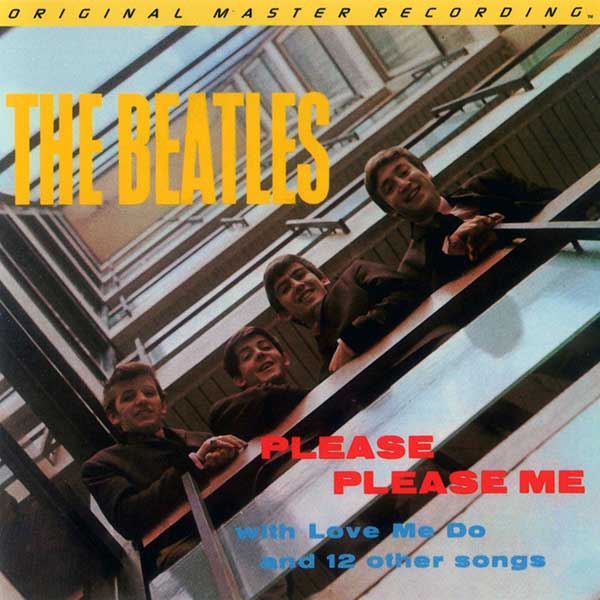 The first time that the British "Please Please Me" LP was made available in America was with the "Original Master Recording" vinyl edition that was released through Mobile Fidelity Sound Lab in January of 1987. This album included "Twist And Shout" and was prepared utilizing half-speed mastering technology from the original master tape on loan from EMI. This version of the album was only made available for a limited time and is quite hard to find today. The first time that the British "Please Please Me" LP was made available in America was with the "Original Master Recording" vinyl edition that was released through Mobile Fidelity Sound Lab in January of 1987. This album included "Twist And Shout" and was prepared utilizing half-speed mastering technology from the original master tape on loan from EMI. This version of the album was only made available for a limited time and is quite hard to find today.
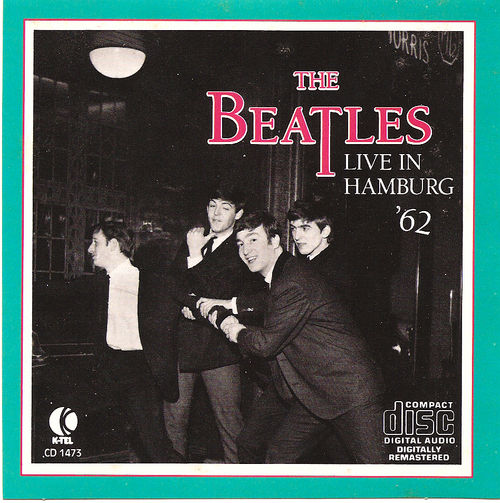 With the dawning of the compact disc era in the '80s, music fans were eagerly waiting for the delayed release of the Beatles catalog on CD. K-Tel Records thought to cash in on this expectation by releasing "Live In Hamburg '62" in early February 1987, this being just prior to the release of the first four Beatles albums by Apple Records. A good amount of Beatles fans couldn't resist owning a live compact disc by their favorite group that featured 20 tracks including "Twist And Shout," not realizing that this was such a lo-fi rough recording as released many times before on vinyl, as detailed above. With the dawning of the compact disc era in the '80s, music fans were eagerly waiting for the delayed release of the Beatles catalog on CD. K-Tel Records thought to cash in on this expectation by releasing "Live In Hamburg '62" in early February 1987, this being just prior to the release of the first four Beatles albums by Apple Records. A good amount of Beatles fans couldn't resist owning a live compact disc by their favorite group that featured 20 tracks including "Twist And Shout," not realizing that this was such a lo-fi rough recording as released many times before on vinyl, as detailed above.
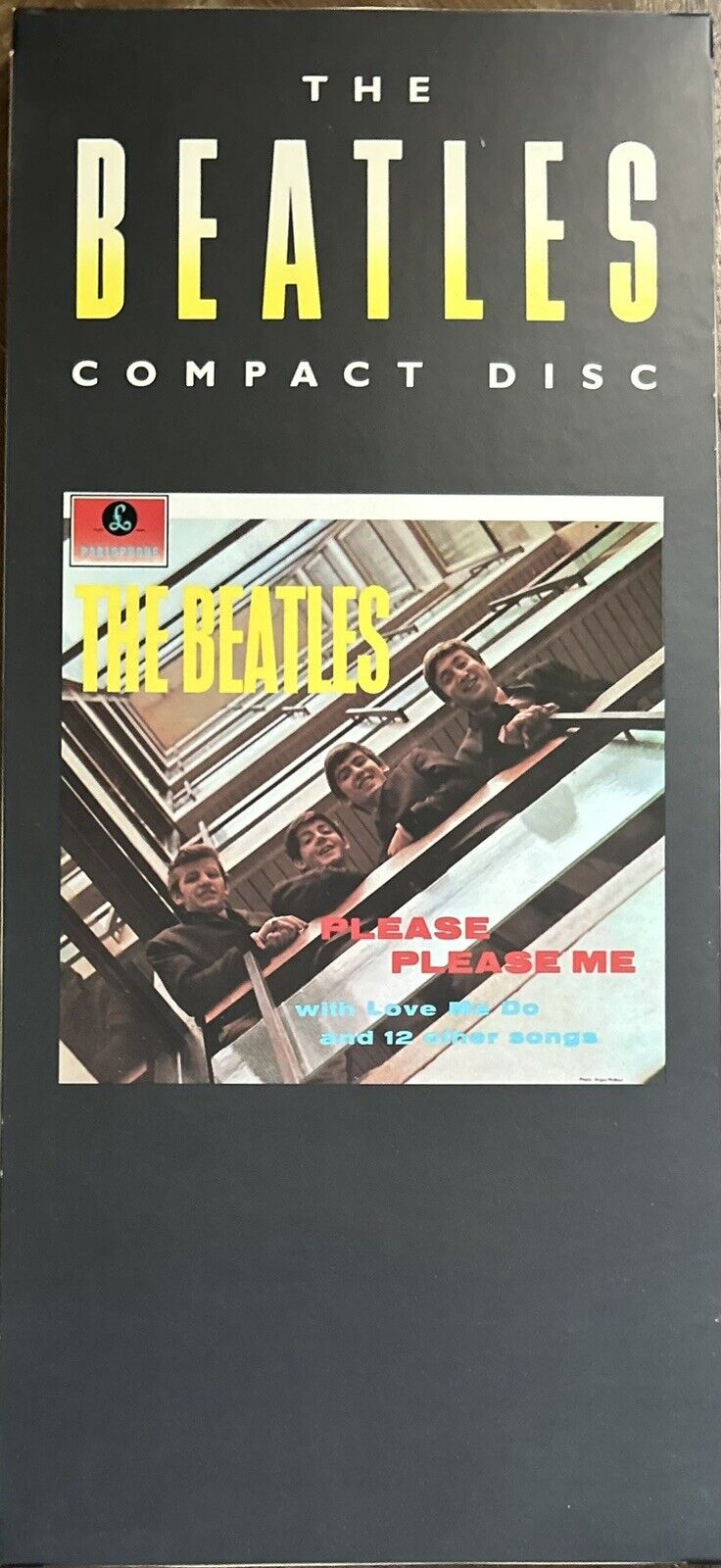 On February 26th, 1987 the first official Beatles compact disc was released, which happened to contain "Twist And Shout." This CD, the original British "Please Please Me" album, was also released on vinyl in America on July 21st, 1987. This album was at first only issued in mono, but on September 9th, 2009, the newly remastered stereo edition was released on CD, a stereo vinyl version coming out on November 13th, 2012. On February 26th, 1987 the first official Beatles compact disc was released, which happened to contain "Twist And Shout." This CD, the original British "Please Please Me" album, was also released on vinyl in America on July 21st, 1987. This album was at first only issued in mono, but on September 9th, 2009, the newly remastered stereo edition was released on CD, a stereo vinyl version coming out on November 13th, 2012.
The next release of "Twist And Shout" was actually not on a Beatles album, but on the soundtrack for the documentary film “Imagine: John Lennon.” The double album (or single CD), released on October 10th, 1988, featured highlights of Lennon's career with The Beatles as well as his solo career. This release peaked at #31 on the Billboard album chart.
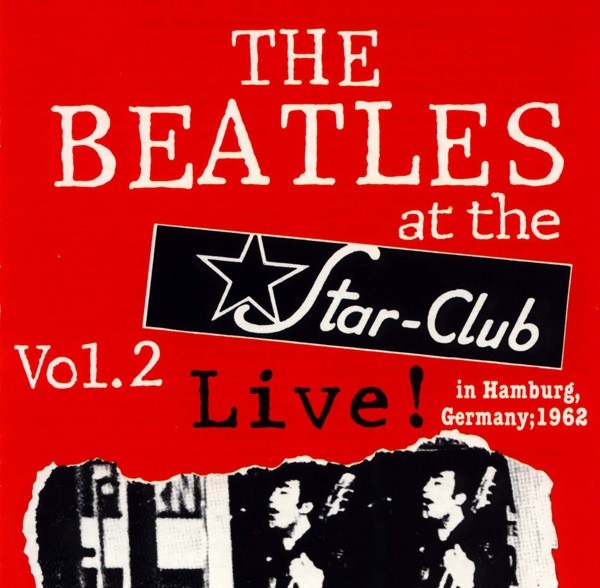 Sometime in 1991, Sony Music took it upon themselves to release two more volumes of the group's 1962 Hamburg recordings detailed above, "Live! At The Star Club In Hamburg, Germany; 1962 (Vol. 2)" containing "Twist And Shout." The release of these volumes prompted legal action from The Beatles, Sony discontinuing production of these volumes because of a lawsuit that had been filed. By 1998, The Beatles had won the right of ownership of these recordings, any releases surfacing after this point being illegally produced bootlegs. Sometime in 1991, Sony Music took it upon themselves to release two more volumes of the group's 1962 Hamburg recordings detailed above, "Live! At The Star Club In Hamburg, Germany; 1962 (Vol. 2)" containing "Twist And Shout." The release of these volumes prompted legal action from The Beatles, Sony discontinuing production of these volumes because of a lawsuit that had been filed. By 1998, The Beatles had won the right of ownership of these recordings, any releases surfacing after this point being illegally produced bootlegs.
On June 30th, 1992, Capitol released a box set they called “Compact Disc EP Collection” featuring the original British EP “Twist And Shout” as it came out in the UK on July 12th, 1963.
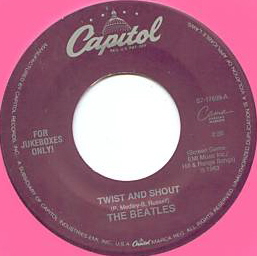 Capitol reissued the "Twist And Shout / There's A Place" single once again, but this time under the Cema Series primarily for jukeboxes. This unique release of the song on March 10th, 1993 was on pink vinyl, and is becoming more and more of a collector's item. Capitol reissued the "Twist And Shout / There's A Place" single once again, but this time under the Cema Series primarily for jukeboxes. This unique release of the song on March 10th, 1993 was on pink vinyl, and is becoming more and more of a collector's item.
The next release of the song was the historic live rendition that The Beatles recorded at the Royal Command Performance at London’s Prince Of Wales Theatre before an affluent audience of royalty on November 4th, 1963. This was released on November 21st, 1995 on the album “Anthology 1.” Also included with this recording was Lennon’s request to the audience, “Would the people in the cheaper seats clap your hands? And the rest of you, if you’ll just rattle your jewelry.”
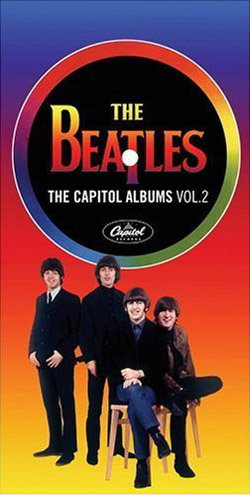 Since “Twist And Shout” came up slightly short of becoming a #1 hit, it failed to make the groundbreaking album “Beatles 1” in 2000. However, this song can be found in both stereo and "Type B" foldover mono in the box set "The Capitol Albums, Vol. 2,” which was released on April 11th, 2006. Since “Twist And Shout” came up slightly short of becoming a #1 hit, it failed to make the groundbreaking album “Beatles 1” in 2000. However, this song can be found in both stereo and "Type B" foldover mono in the box set "The Capitol Albums, Vol. 2,” which was released on April 11th, 2006.
September 9th, 2009 saw the next US release of the song on the CD box set entitled “The Beatles In Mono,” which included the entire Beatles catalog as originally mixed in mono but in a cleaner remastered condition, definitely worth the price. The vinyl edition of this box set was first released on September 9th, 2014.
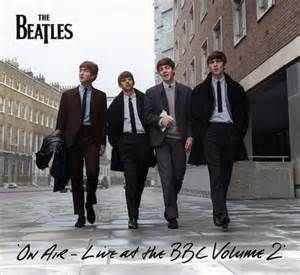 On November 11th, 2013, the album "On Air - Live At The BBC Volume 2" was released, which featured an unheard version of "Twist And Shout" recorded on July 16th, 1963 for the radio program "Pop Go The Beatles." The clarity of this recording, as well as the flawless performance, makes this album a must-have for true Beatles fans. Also released around this date was a 14-track sampler of the above album for promotional purposes, "Twist And Shout" being included therein. On November 11th, 2013, the album "On Air - Live At The BBC Volume 2" was released, which featured an unheard version of "Twist And Shout" recorded on July 16th, 1963 for the radio program "Pop Go The Beatles." The clarity of this recording, as well as the flawless performance, makes this album a must-have for true Beatles fans. Also released around this date was a 14-track sampler of the above album for promotional purposes, "Twist And Shout" being included therein.
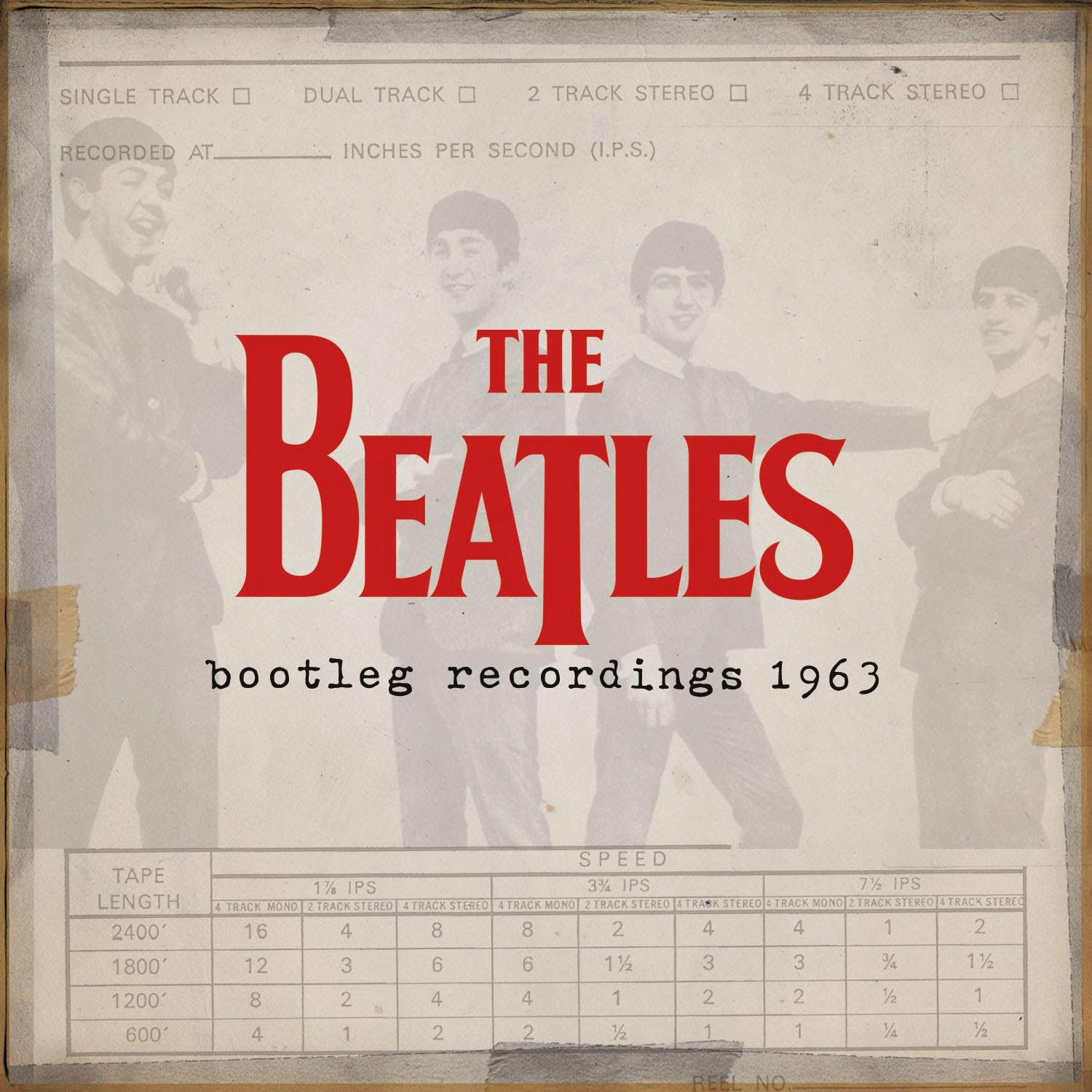 On December 17th, 2013, iTunes released the 59 track compilation set "Bootleg Recordings 1963" which was made available on their downloading platform only. This new album included the BBC recording of "Twist And Shout" from September 24th, 1963 for the BBC program "Pop Go The Beatles." The purpose of this album was to extend the copyright of these recordings under European Union law from 50 years (which was set to expire at the end of 2013) to 70 years (until 2033), this being considered an official release. This compilation album was only available in the US on that date to those in the know for a number of hours for $39.99 in its entirety or to be purchased as individual tracks, but was later made available for purchase as well. On December 17th, 2013, iTunes released the 59 track compilation set "Bootleg Recordings 1963" which was made available on their downloading platform only. This new album included the BBC recording of "Twist And Shout" from September 24th, 1963 for the BBC program "Pop Go The Beatles." The purpose of this album was to extend the copyright of these recordings under European Union law from 50 years (which was set to expire at the end of 2013) to 70 years (until 2033), this being considered an official release. This compilation album was only available in the US on that date to those in the know for a number of hours for $39.99 in its entirety or to be purchased as individual tracks, but was later made available for purchase as well.
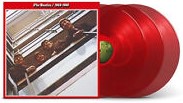 A 50th Anniversay edition of the compilation LP "The Beatles / 1962 - 1966" ("The Red Album") was released on November 10th, 2023. The newly expanded release included 12 additional songs for a total of 38 tracks, this including the new mix of "Twist And Shout" detailed above, and was made available as a double compact disc set and as a triple vinyl release on both black and red vinyl. A 50th Anniversay edition of the compilation LP "The Beatles / 1962 - 1966" ("The Red Album") was released on November 10th, 2023. The newly expanded release included 12 additional songs for a total of 38 tracks, this including the new mix of "Twist And Shout" detailed above, and was made available as a double compact disc set and as a triple vinyl release on both black and red vinyl.
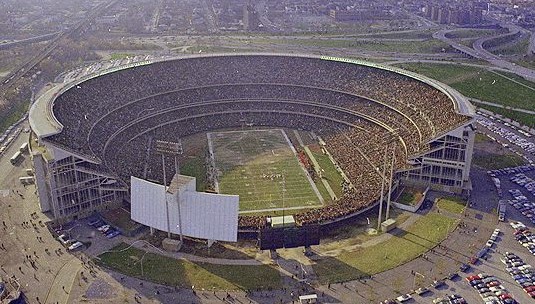
New York City's "Shea Stadium"
Live Performances
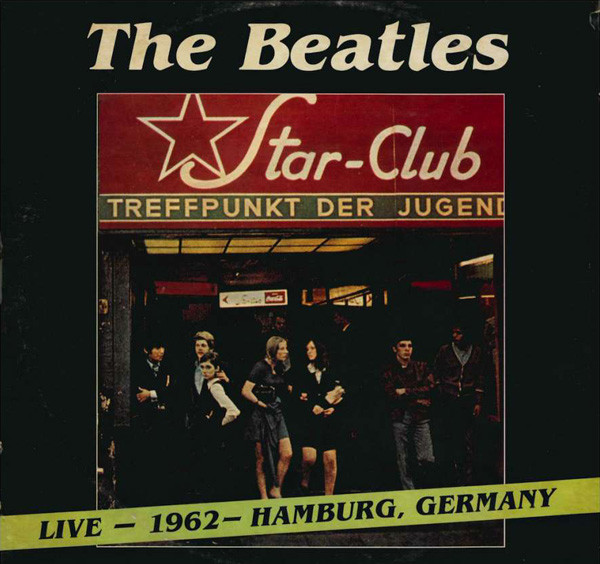 “Twist And Shout” had quite a long performance history for The Beatles. The Isley Brothers' single may have sold poorly in Britain, but The Beatles picked up on it shortly after its UK release in the summer of 1962, undoubtedly noticing the record while filing through the newer releases at Brian Epstein's NEMS record department. They began including the song in their stage act in the later half of 1962, which is evidenced by its inclusion in their recorded Hamburg performance from the 1962 Christmas season that was eventually released in the late '70s. The Beatles then continued to play the song consistently well into their national discovery and American “Beatlemania,” still performing it in their Summer 1965 North American Tour, including their show at Shea Stadium. “Twist And Shout” had quite a long performance history for The Beatles. The Isley Brothers' single may have sold poorly in Britain, but The Beatles picked up on it shortly after its UK release in the summer of 1962, undoubtedly noticing the record while filing through the newer releases at Brian Epstein's NEMS record department. They began including the song in their stage act in the later half of 1962, which is evidenced by its inclusion in their recorded Hamburg performance from the 1962 Christmas season that was eventually released in the late '70s. The Beatles then continued to play the song consistently well into their national discovery and American “Beatlemania,” still performing it in their Summer 1965 North American Tour, including their show at Shea Stadium.
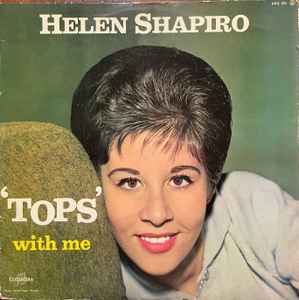 Realizing early on the rousing effect the song had in their Cavern and Hamburg dates, it quickly became a favorite to close their shows. By the time of their first British tour with Helen Shapiro in February of 1963, they thought to include this yet-to-be recorded song in their abbreviated set list because, as Beatles biographer Hunter Davies stated, this was “perhaps the most out-and-out wild rock'n'roll song they ever sang.” Realizing early on the rousing effect the song had in their Cavern and Hamburg dates, it quickly became a favorite to close their shows. By the time of their first British tour with Helen Shapiro in February of 1963, they thought to include this yet-to-be recorded song in their abbreviated set list because, as Beatles biographer Hunter Davies stated, this was “perhaps the most out-and-out wild rock'n'roll song they ever sang.”
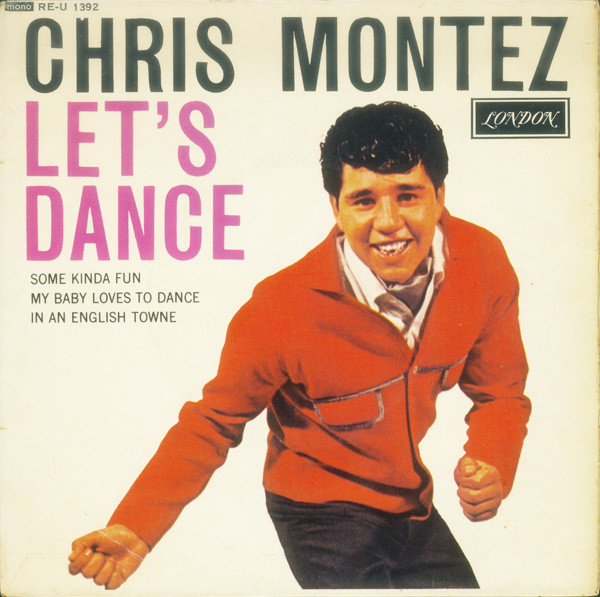 Their March 1963 British tour with Tommy Roe and Chris Montez as headliners also featured the group playing their recently recorded "Twist And Shout." (Since the album was not released in Britain until March 22nd, 1963, the audiences for the majority of this tour were enjoying an unreleased Beatles song.) Since The Beatles were getting applause on a greater scale than either of the tour’s headliners, manager Arthur Howes altered the show's running order to allow for The Beatles, as well as “Twist And Shout,” to close the show. On April 4th, 1963, as detailed above, the band included the song in a unique hour-long concert at Roxburgh Hall, Stowe School in Stowe, Bucks, which was an all-boys school. Their March 1963 British tour with Tommy Roe and Chris Montez as headliners also featured the group playing their recently recorded "Twist And Shout." (Since the album was not released in Britain until March 22nd, 1963, the audiences for the majority of this tour were enjoying an unreleased Beatles song.) Since The Beatles were getting applause on a greater scale than either of the tour’s headliners, manager Arthur Howes altered the show's running order to allow for The Beatles, as well as “Twist And Shout,” to close the show. On April 4th, 1963, as detailed above, the band included the song in a unique hour-long concert at Roxburgh Hall, Stowe School in Stowe, Bucks, which was an all-boys school.
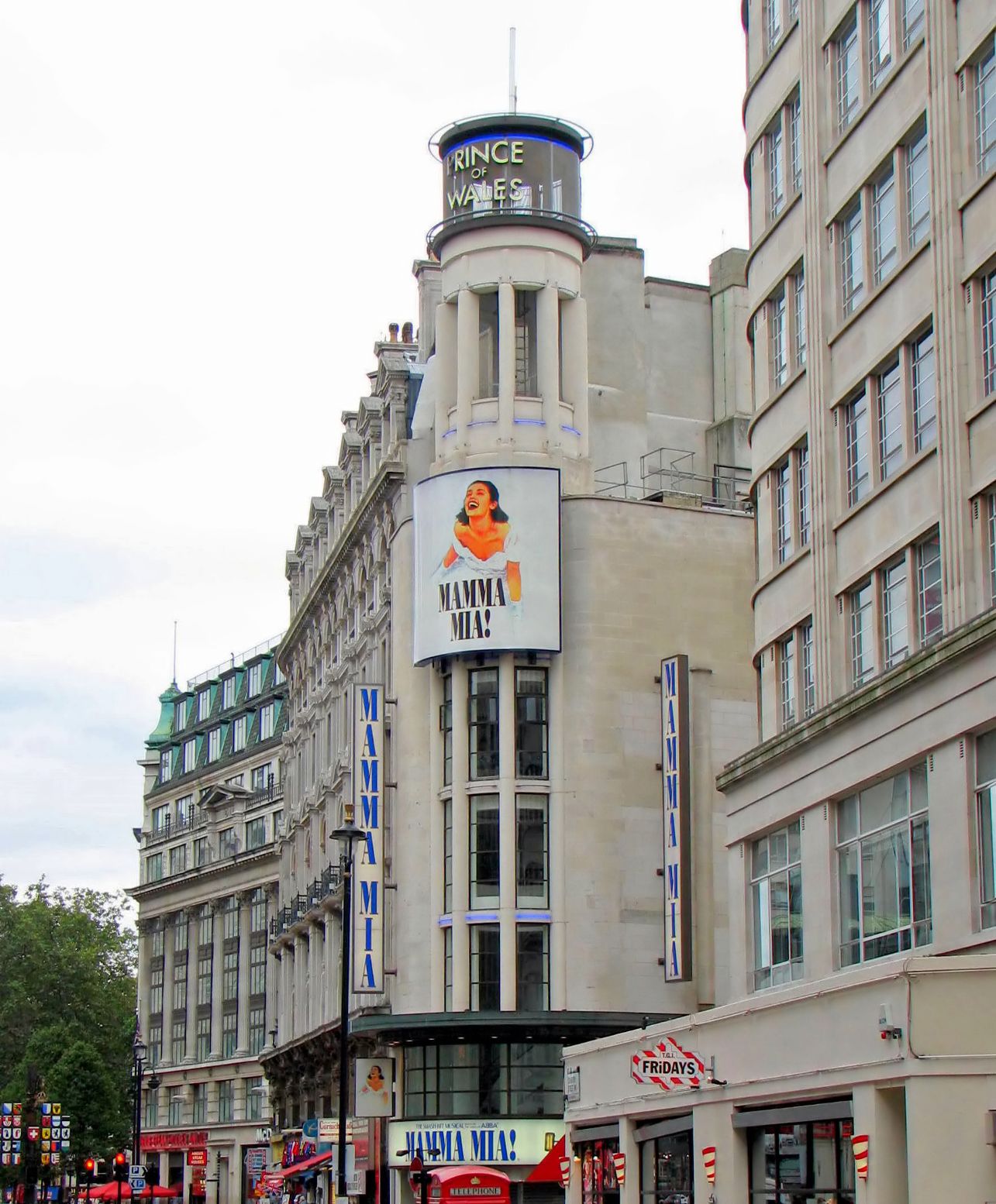 The group's May 1963 British tour headlining with Roy Orbison also featured the song, as did the rest of their concert dates throughout the year, including the legendary 1963 Royal Command Performance at the Prince of Wales Theatre in London on November 4th, 1963. “Twist And Shout” appeared as the last of four songs they played on that historic day, which included the rehearsed but funny introduction from John: "For our last number I’d like to ask your help. Would the people in the cheaper seats clap your hands? And the rest of you, if you’ll just rattle your jewelry." It is said that John intended to drop the F-bomb right before the word "jewelry," but Paul and the group’s nervous manager Brian Epstein talked him out of it. Since this show was highly publicised and was broadcast on British television and BBC radio, one can only imagine the repercussions if John would have gone through with using the "F" word on this occasion, possibly hindering their acceptance into the US in the upcoming months. The group's May 1963 British tour headlining with Roy Orbison also featured the song, as did the rest of their concert dates throughout the year, including the legendary 1963 Royal Command Performance at the Prince of Wales Theatre in London on November 4th, 1963. “Twist And Shout” appeared as the last of four songs they played on that historic day, which included the rehearsed but funny introduction from John: "For our last number I’d like to ask your help. Would the people in the cheaper seats clap your hands? And the rest of you, if you’ll just rattle your jewelry." It is said that John intended to drop the F-bomb right before the word "jewelry," but Paul and the group’s nervous manager Brian Epstein talked him out of it. Since this show was highly publicised and was broadcast on British television and BBC radio, one can only imagine the repercussions if John would have gone through with using the "F" word on this occasion, possibly hindering their acceptance into the US in the upcoming months.
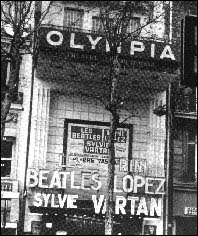 1964 saw the band continue to feature "Twist And Shout," such as during their three-week residency at the Olympia Theatre in Paris, France. Starting on January 15th, they played to lukewarm audiences made up primarily of boys who reportedly only wanted to hear rock and roll music, especially the song, “Twist And Shout.” After The Beatles played it, many in these audiences would shout “Un autre! Un autre!” 1964 saw the band continue to feature "Twist And Shout," such as during their three-week residency at the Olympia Theatre in Paris, France. Starting on January 15th, they played to lukewarm audiences made up primarily of boys who reportedly only wanted to hear rock and roll music, especially the song, “Twist And Shout.” After The Beatles played it, many in these audiences would shout “Un autre! Un autre!”
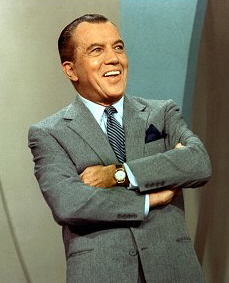 As The Beatles crossed shores into America, the band continued to display the song's raucous features in their live performances. In February 1964, they pre-recorded the song for an Ed Sullivan Show episode and then also performed it at both the Washington Coliseum and Carnegie Hall, New York. They finally began to get away from closing their shows with it, deciding instead to follow “Twist And Shout” with their unreleased rendition of the Little Richard classic “Long Tall Sally.” As The Beatles crossed shores into America, the band continued to display the song's raucous features in their live performances. In February 1964, they pre-recorded the song for an Ed Sullivan Show episode and then also performed it at both the Washington Coliseum and Carnegie Hall, New York. They finally began to get away from closing their shows with it, deciding instead to follow “Twist And Shout” with their unreleased rendition of the Little Richard classic “Long Tall Sally.”
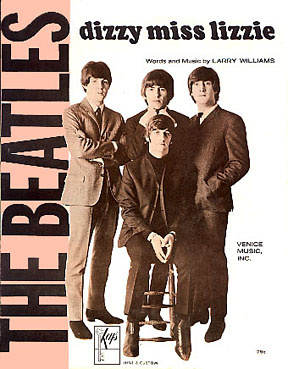 As their touring continued throughout 1964 and 1965, “Twist And Shout” continued to be featured, albeit in a shortened form because of this rocker being quite hard for John to sing. The Beatles now opting to open each concert with the song instead of closing with it. This continued through until their North American Tour in the summer of 1965. By the time of their last British tour starting in December of 1965, the song was permanently dropped from their set list, replaced with a newer American cover song they more recently recorded, “Dizzy Miss Lizzy.” When they were asked at the start of the tour why “Twist And Shout” was no longer being performed, John replied, ”We’ve been doing it for years. It was starting to sicken us.” Apart from the band's partial impromptu jam of the song on January 8th, 1969 during rehearsals for their “Get Back” project, the final date on their 1965 American Summer Tour at the Cow Palace in San Francisco, California on August 31st appears to be the last official Beatles performance of “Twist And Shout.” As their touring continued throughout 1964 and 1965, “Twist And Shout” continued to be featured, albeit in a shortened form because of this rocker being quite hard for John to sing. The Beatles now opting to open each concert with the song instead of closing with it. This continued through until their North American Tour in the summer of 1965. By the time of their last British tour starting in December of 1965, the song was permanently dropped from their set list, replaced with a newer American cover song they more recently recorded, “Dizzy Miss Lizzy.” When they were asked at the start of the tour why “Twist And Shout” was no longer being performed, John replied, ”We’ve been doing it for years. It was starting to sicken us.” Apart from the band's partial impromptu jam of the song on January 8th, 1969 during rehearsals for their “Get Back” project, the final date on their 1965 American Summer Tour at the Cow Palace in San Francisco, California on August 31st appears to be the last official Beatles performance of “Twist And Shout.”
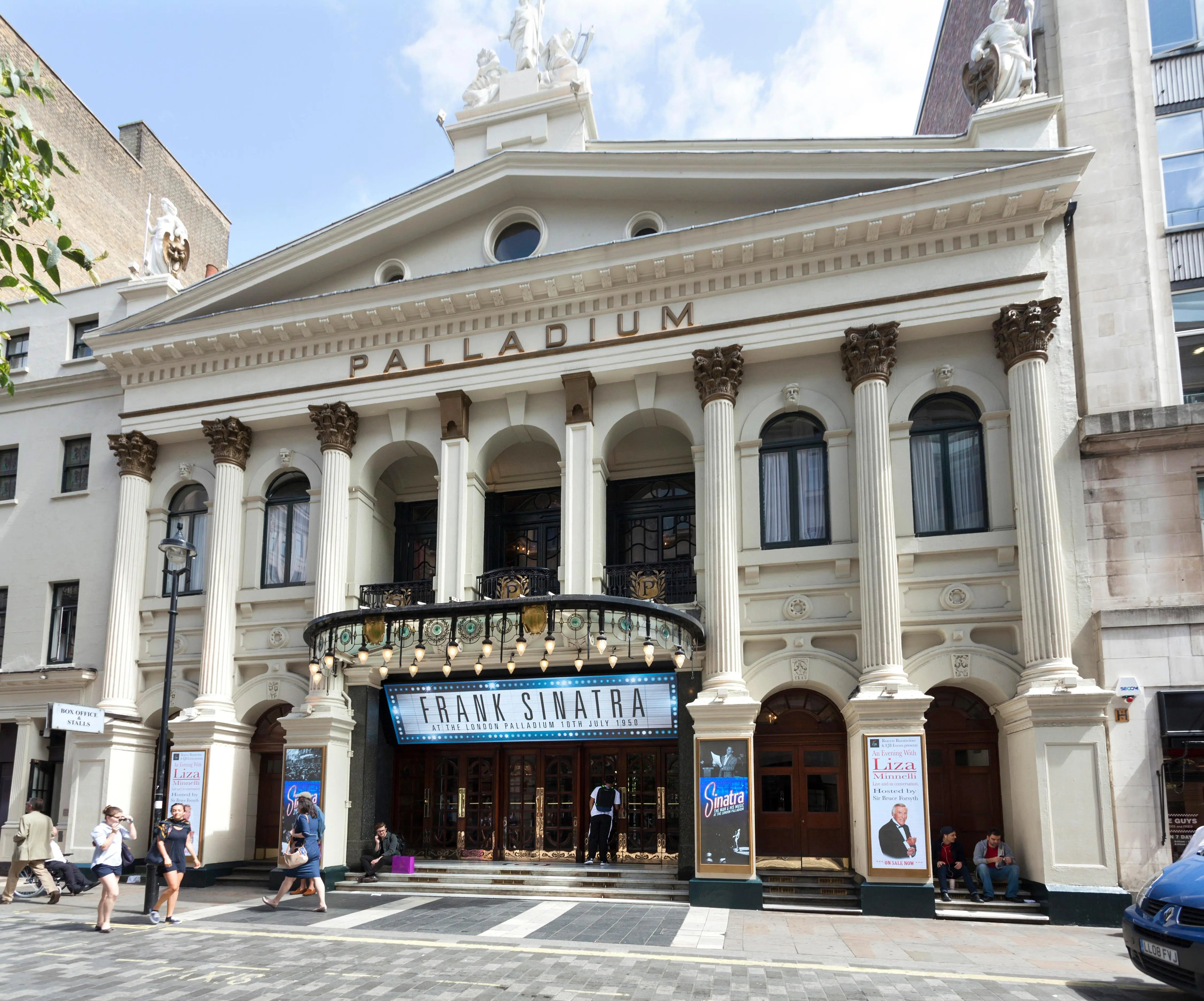 Incredibly, The Beatles filmed the song "Twist And Shout" a total of 18 times for television throught the world. 1. "People And Places" (Dec. 17th, 1962 live UK) 2. "Scene At 6:30" (Aug. 14th, 1963 UK) 3. "The Mersey Sound" (recorded Aug. 7th, aired on Oct. 9th, 1963 UK) 4. "Big Night Out" (mimed Sept. 1st aired Sept. 7th, 1963 UK) 5. "Ready, Steady, Go!" (mimed live Oct. 4th, 1963 UK) 6. "Val Parnell's Sunday Night at the London Palladium" (mimed live Oct. 13th, 1963 UK) 7. "Drop In" (filmed Oct. 30th aired Nov. 3rd, 1963 Sweden) 8. "Royal Command Performance" (filmed Nov. 4th aired Nov. 10th, 1963 UK) 9. "It's The Beatles!" (filmed and broadcast Dec. 7th, 1963 UK) 10. "Thank Your Lucky Stars" (mimed Dec. 15th aired Dec. 21st, 1963 UK) 11. "Val Parnell's Sunday Night At The London Palladium" (Jan. 12th, 1964 live UK) 12. "The Ed Sullivan Show" (filmed Feb. 9th aired Feb. 23rd, 1964 US) 13. "Big Beat '64" (filmed April 26th aired May 10th, 1964 UK) 14. "Around The Beatles" (mimed April 28th aired May 6th, 1964 UK) 15. "The Beatles In Nederland" (filmed June 5th aired June 8th, 1964 The Netherlands) 16. "The Beatles Sing For Shell" (filmed June 17th aired July 1st, 1964 Australia) 17. "Les Beatles" (filmed June 20th aired Oct. 31st, 1964 France) 18. "The Beatles At Shea Stadium" (filmed Aug. 15th, 1965 first aired March 1st, 1966 in UK and Jan. 10th, 1967 US). Incredibly, The Beatles filmed the song "Twist And Shout" a total of 18 times for television throught the world. 1. "People And Places" (Dec. 17th, 1962 live UK) 2. "Scene At 6:30" (Aug. 14th, 1963 UK) 3. "The Mersey Sound" (recorded Aug. 7th, aired on Oct. 9th, 1963 UK) 4. "Big Night Out" (mimed Sept. 1st aired Sept. 7th, 1963 UK) 5. "Ready, Steady, Go!" (mimed live Oct. 4th, 1963 UK) 6. "Val Parnell's Sunday Night at the London Palladium" (mimed live Oct. 13th, 1963 UK) 7. "Drop In" (filmed Oct. 30th aired Nov. 3rd, 1963 Sweden) 8. "Royal Command Performance" (filmed Nov. 4th aired Nov. 10th, 1963 UK) 9. "It's The Beatles!" (filmed and broadcast Dec. 7th, 1963 UK) 10. "Thank Your Lucky Stars" (mimed Dec. 15th aired Dec. 21st, 1963 UK) 11. "Val Parnell's Sunday Night At The London Palladium" (Jan. 12th, 1964 live UK) 12. "The Ed Sullivan Show" (filmed Feb. 9th aired Feb. 23rd, 1964 US) 13. "Big Beat '64" (filmed April 26th aired May 10th, 1964 UK) 14. "Around The Beatles" (mimed April 28th aired May 6th, 1964 UK) 15. "The Beatles In Nederland" (filmed June 5th aired June 8th, 1964 The Netherlands) 16. "The Beatles Sing For Shell" (filmed June 17th aired July 1st, 1964 Australia) 17. "Les Beatles" (filmed June 20th aired Oct. 31st, 1964 France) 18. "The Beatles At Shea Stadium" (filmed Aug. 15th, 1965 first aired March 1st, 1966 in UK and Jan. 10th, 1967 US).
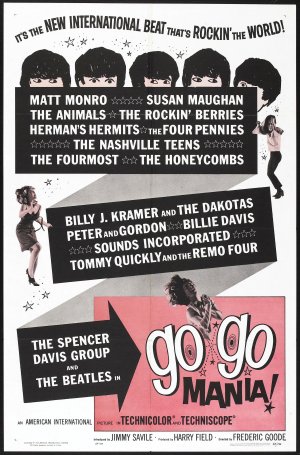 Of interest here is an eight minute "Techniscope" color newsreel entitled "The Beatles Come To Town" that was shown in British movie theaters before the feature film was viewed. The sequence in this newsreel that featured "Twist And Shout," along with "She Loves You," was filmed during the band's concert at the ABC Cinema in Lancashire, England on November 20th, 1963. Theaters in the UK featured this newsreel the week of December 22nd, 1963. The concert footage of these two songs was later incorporated into a 70 minute 1965 movie entitled "Pop Gear" in Britain and "Go Go Mania" in America. Of interest here is an eight minute "Techniscope" color newsreel entitled "The Beatles Come To Town" that was shown in British movie theaters before the feature film was viewed. The sequence in this newsreel that featured "Twist And Shout," along with "She Loves You," was filmed during the band's concert at the ABC Cinema in Lancashire, England on November 20th, 1963. Theaters in the UK featured this newsreel the week of December 22nd, 1963. The concert footage of these two songs was later incorporated into a 70 minute 1965 movie entitled "Pop Gear" in Britain and "Go Go Mania" in America.
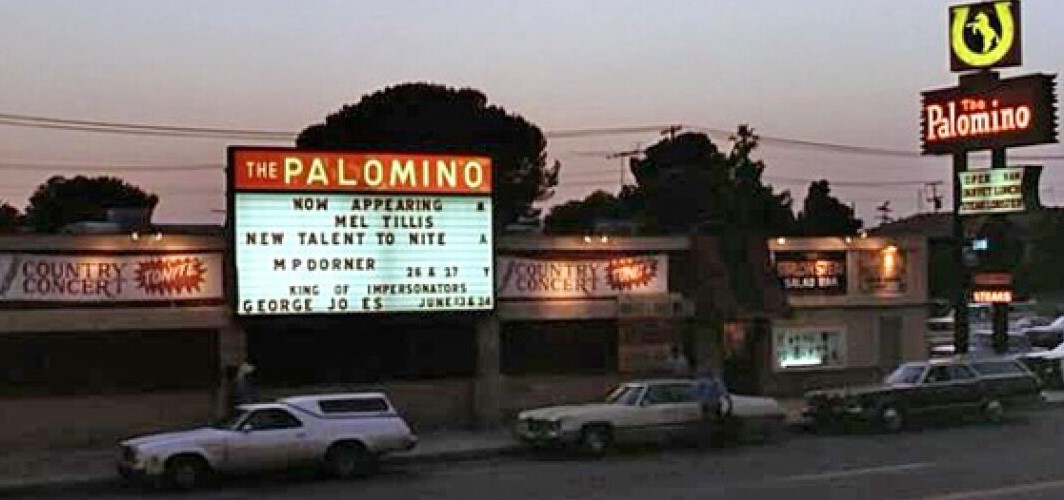 One further noteworthy performance of "Twist And Shout" was on February 19th, 1987 by an impromptu band that was posthumously called "The Silver Wilburys." This one-time jam took place at the Palomino Club out in Hollywood, California with George Harrison, John Fogerty and Bob Dylan on stage. Their 15 song set concluded with a medley of "Twist And Shout" and "La Bamba." One further noteworthy performance of "Twist And Shout" was on February 19th, 1987 by an impromptu band that was posthumously called "The Silver Wilburys." This one-time jam took place at the Palomino Club out in Hollywood, California with George Harrison, John Fogerty and Bob Dylan on stage. Their 15 song set concluded with a medley of "Twist And Shout" and "La Bamba."
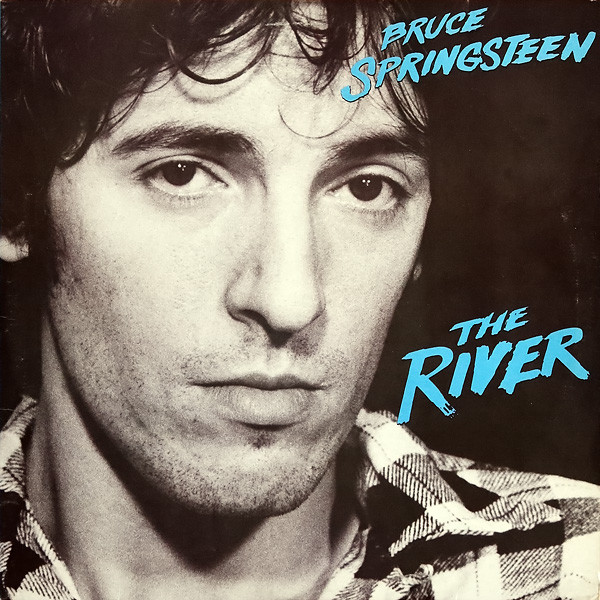 McCartney then made a surprise appearance at Bruce Springsteen and The E. Street Band's performance at the 2012 Hard Rock Calling show to play two songs, "I Saw Her Standing There" and “Twist And Shout.” This July 14th, 2012 show displayed Paul on lead vocals for a few verses of "Twist And Shout," but he made some lyrical mistakes. I suppose we can forgive him since he never sang lead vocals on the song until this day. McCartney then made a surprise appearance at Bruce Springsteen and The E. Street Band's performance at the 2012 Hard Rock Calling show to play two songs, "I Saw Her Standing There" and “Twist And Shout.” This July 14th, 2012 show displayed Paul on lead vocals for a few verses of "Twist And Shout," but he made some lyrical mistakes. I suppose we can forgive him since he never sang lead vocals on the song until this day.
Conclusion
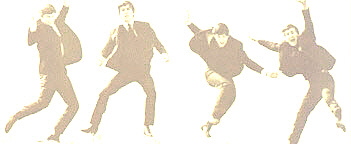 What The Beatles had created with their rendition of “Twist And Shout” became an essential ingredient to their immense notoriety. The wild and creative nature of their version, including the climactic vocal arpeggio that appears twice in the song, helped excite audiences worldwide (even hard to please Paris audiences) as well as to define the group themselves. Fine evidence of this is The Beatles’ appearance on the British television show, “The Morcambe And Wise Show,” in which a ‘beatle-wigged’ host twice exclaims “twist and shout” in a light-hearted imitation of their guests. The Beatles definitely made the Isley Brothers' classic hit their own. What The Beatles had created with their rendition of “Twist And Shout” became an essential ingredient to their immense notoriety. The wild and creative nature of their version, including the climactic vocal arpeggio that appears twice in the song, helped excite audiences worldwide (even hard to please Paris audiences) as well as to define the group themselves. Fine evidence of this is The Beatles’ appearance on the British television show, “The Morcambe And Wise Show,” in which a ‘beatle-wigged’ host twice exclaims “twist and shout” in a light-hearted imitation of their guests. The Beatles definitely made the Isley Brothers' classic hit their own.
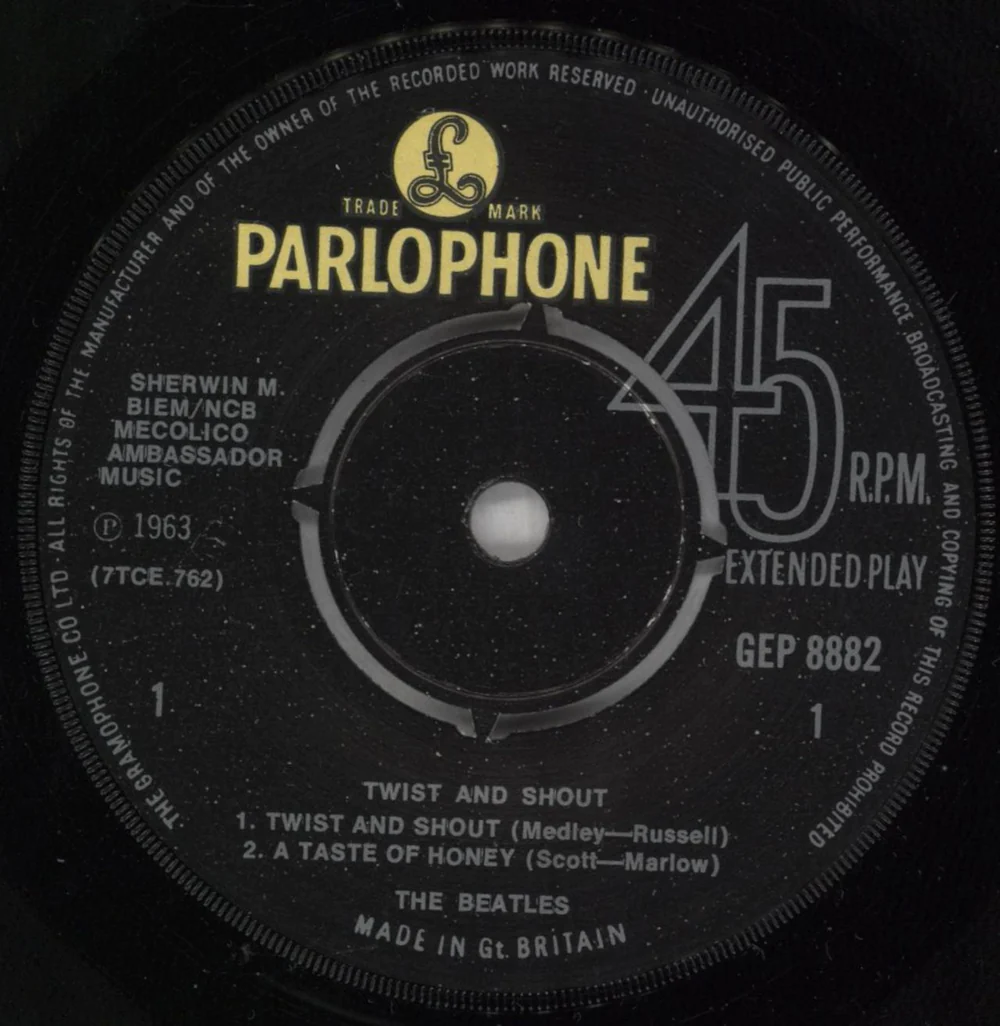 Although British audiences never saw this song chart as a Beatles single, Parlophone Records actually released it as the title song of their first British EP. Released in July of 1963, it was the top selling EP record by September of that year, which was charting simultaneously with their #1 album “Please Please Me” and their #1 single “She Loves You.” To this day, “Twist And Shout” is the biggest selling British EP in history. Not that the song was unknown on the British singles charts. Although British audiences never saw this song chart as a Beatles single, Parlophone Records actually released it as the title song of their first British EP. Released in July of 1963, it was the top selling EP record by September of that year, which was charting simultaneously with their #1 album “Please Please Me” and their #1 single “She Loves You.” To this day, “Twist And Shout” is the biggest selling British EP in history. Not that the song was unknown on the British singles charts.
 Brian Poole And The Tremeloes, the group that was signed by Decca Records instead of The Beatles after their January 1962 audition, recorded their own rendition of “Twist And Shout,” thus becoming their first hit single by charting at #4 in Britain. Their version owed a lot to The Beatles version which, ironically, allowed them to ride on The Beatles' coattails to fame and fortune in Britain and the US. Brian Poole And The Tremeloes, the group that was signed by Decca Records instead of The Beatles after their January 1962 audition, recorded their own rendition of “Twist And Shout,” thus becoming their first hit single by charting at #4 in Britain. Their version owed a lot to The Beatles version which, ironically, allowed them to ride on The Beatles' coattails to fame and fortune in Britain and the US.
What better conclusion to The Beatles' first album (British and American) could there be but with this All-American R&B classic turned British Invasion classic. When listening to this song even today, the passion felt by these four young musicians is clearly discernible. The Beatles may have tired of playing it after nearly three years of non-stop performances, and everyone alive on this planet may have every note and word memorized, but what is undeniable is this fact: with “Twist And Shout,” The Beatles recorded the best British rock and roll record to date.
Song Summary
“Twist And Shout”
Written by: Phil Medley – Bert Russell Berns
- Song Written: February, 1961 (approx.)
- Song Recorded: February 11, 1963
- First US Release Date: January 6, 1964
- First US Album Release: Vee Jay #VJLP 1062“Introducing…The Beatles”
- US Single Release: Tollie #9001
- Highest Chart Position: #2
- British Album Release: Parlophone #PCS3042“Please Please Me”
- Length: 2:23
- Key: D major
- Producer: George Martin
- Engineers: Norman Smith, Richard Langham
Instrumentation (most likely):
- John Lennon - Lead Vocals, Rhythm Guitar (1958 Rickenbacker 325)
- Paul McCartney - Bass Guitar (1961 Hofner 500/1), Background Vocals
- George Harrison – Lead Guitar (1957 Gretsch Duo Jet), Background Vocals
- Ringo Starr – Drums (1960 Premier 58/54 Mahogany)
Written and compiled by Dave Rybaczewski
|
IF YOU WOULD LIKE TO MAKE A DONATION TO KEEP THIS WEBSITE UP AND RUNNING, PLEASE CLICK BELOW!
Sign Up Below for our MONTHLY BEATLES TRIVIA QUIZ!
|